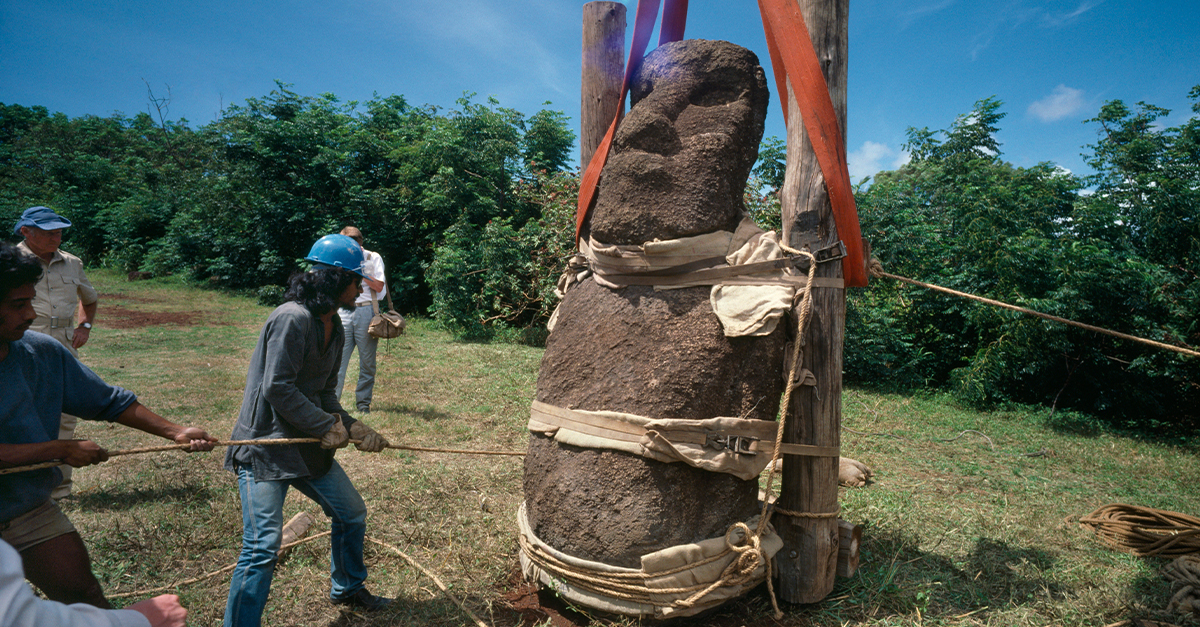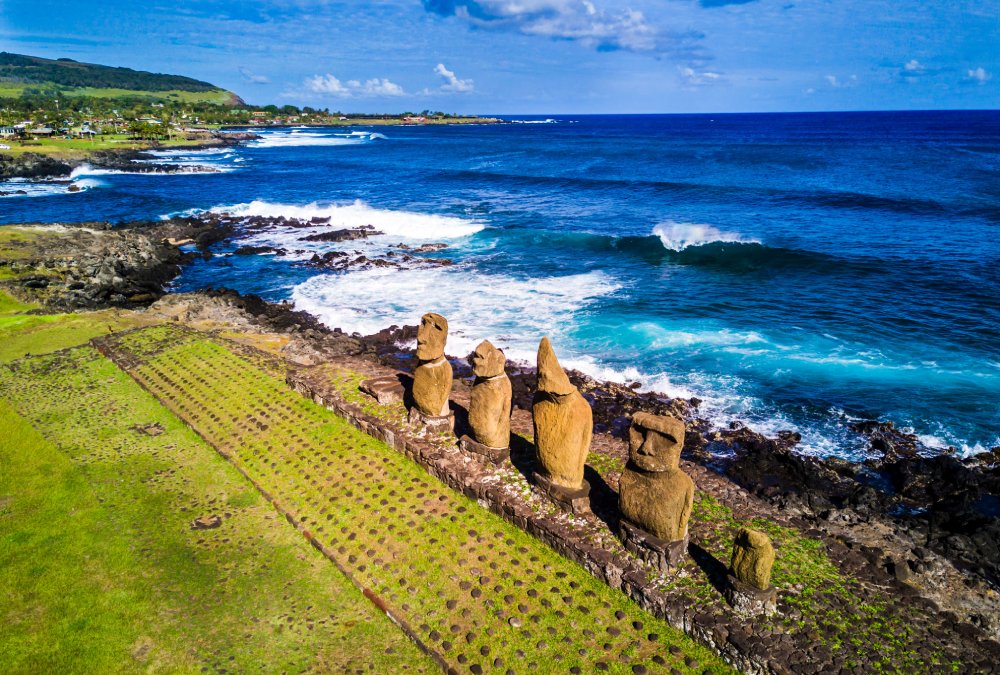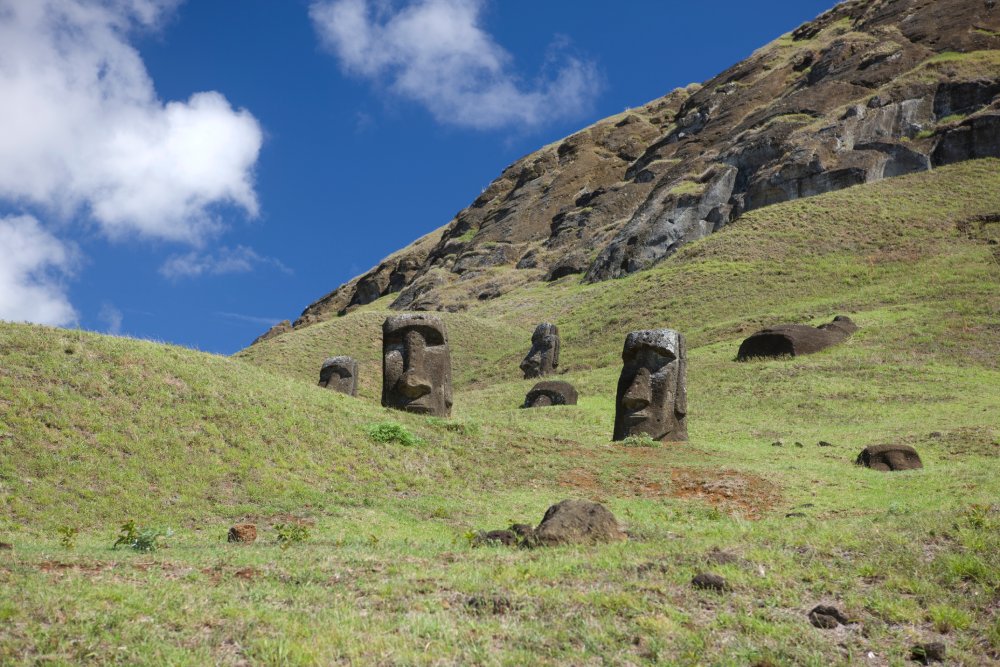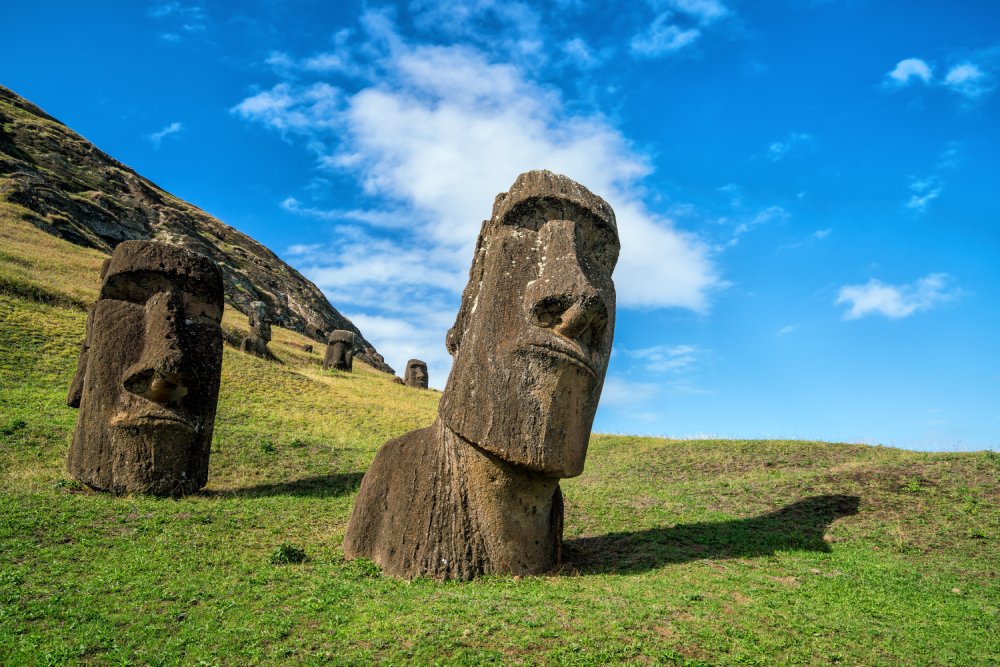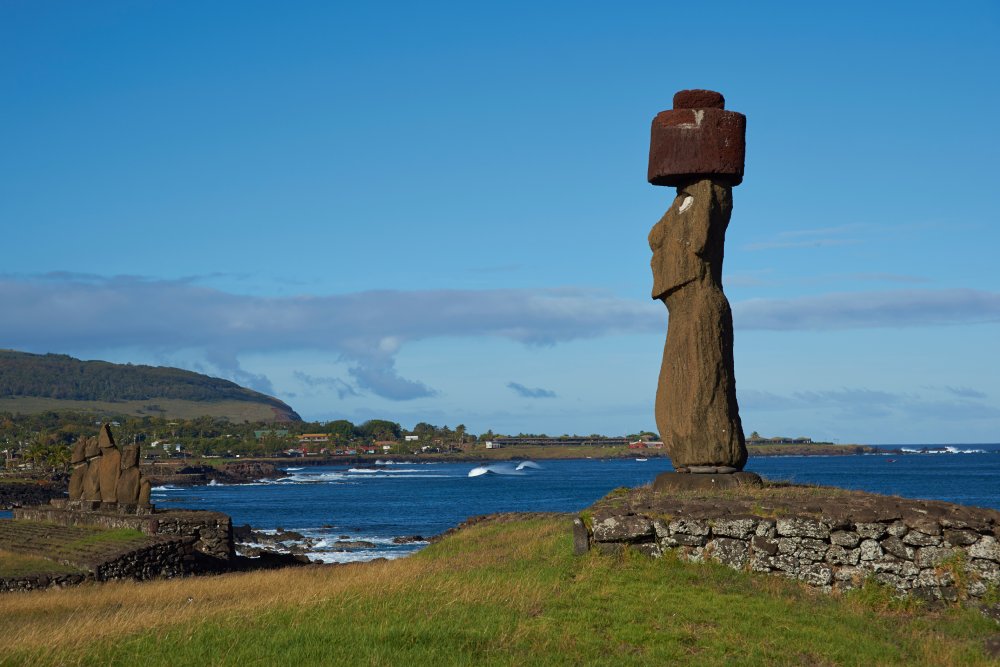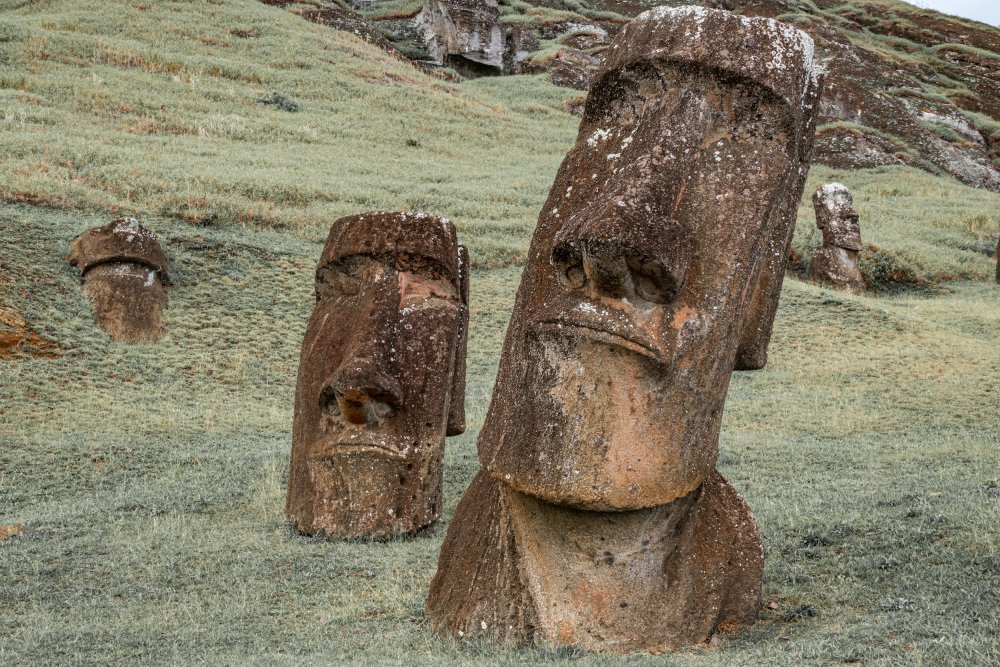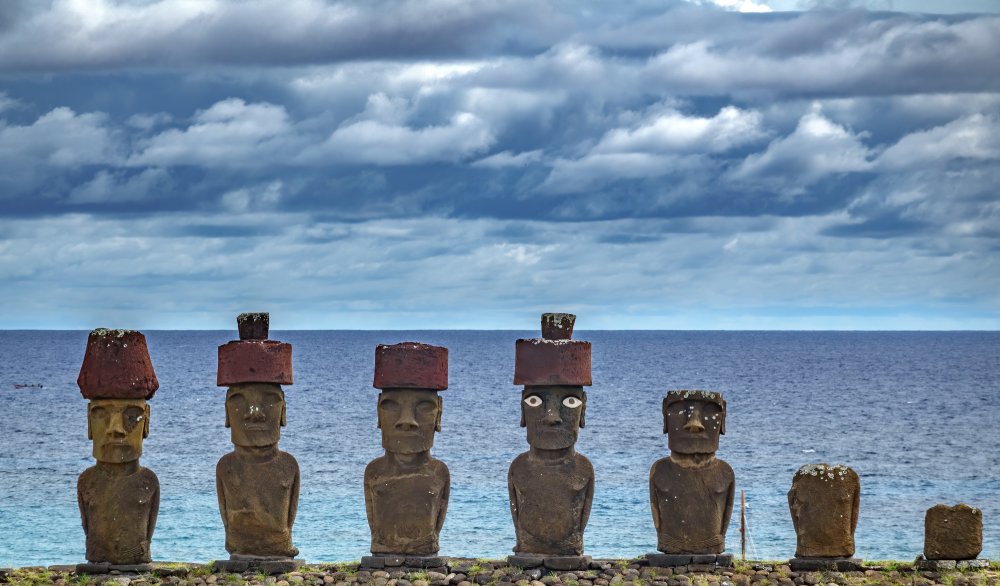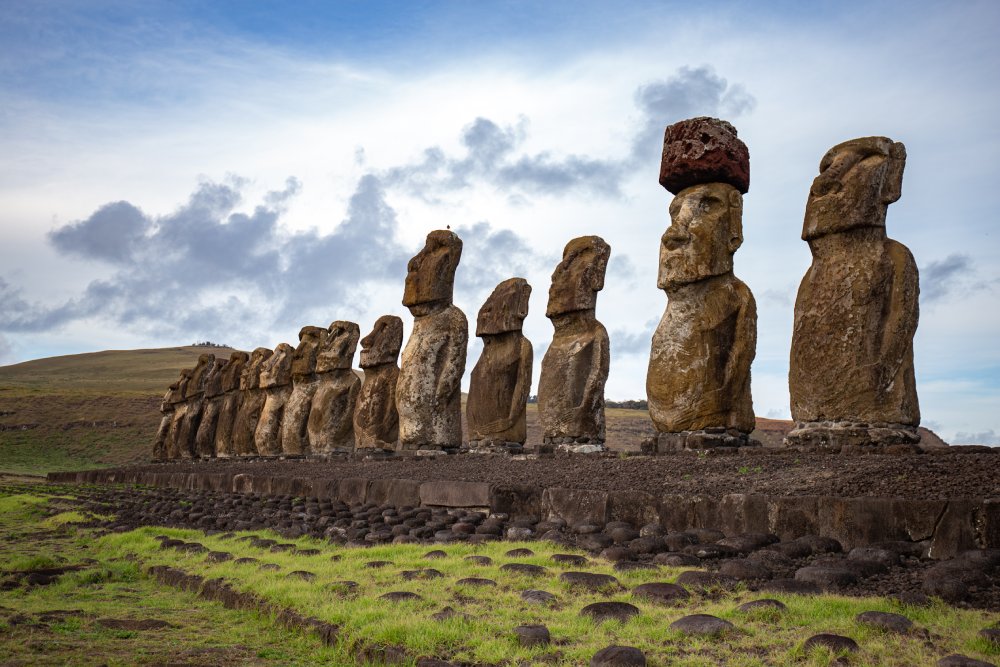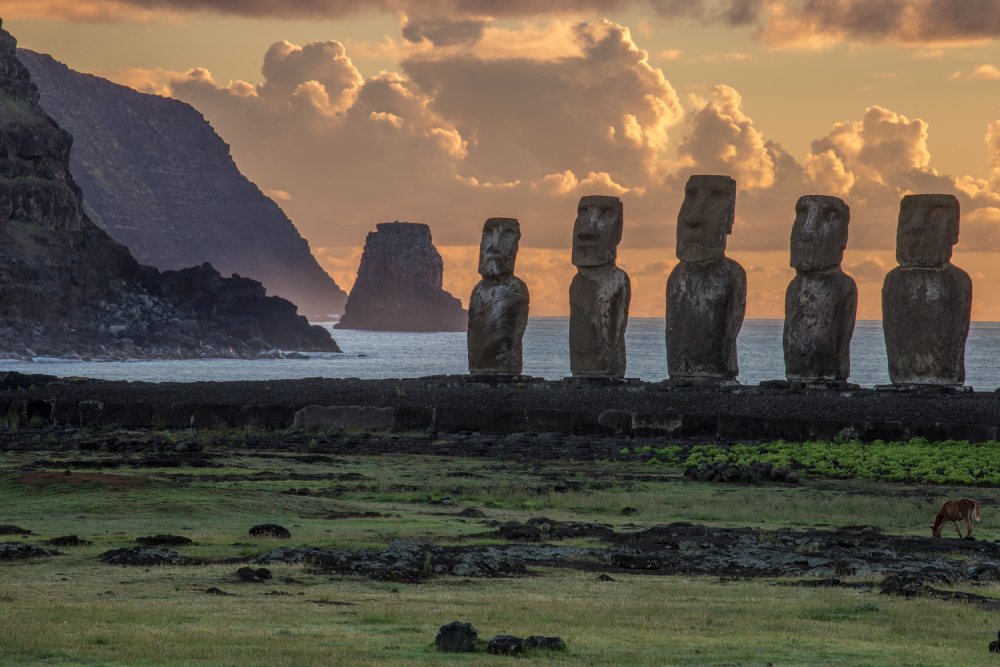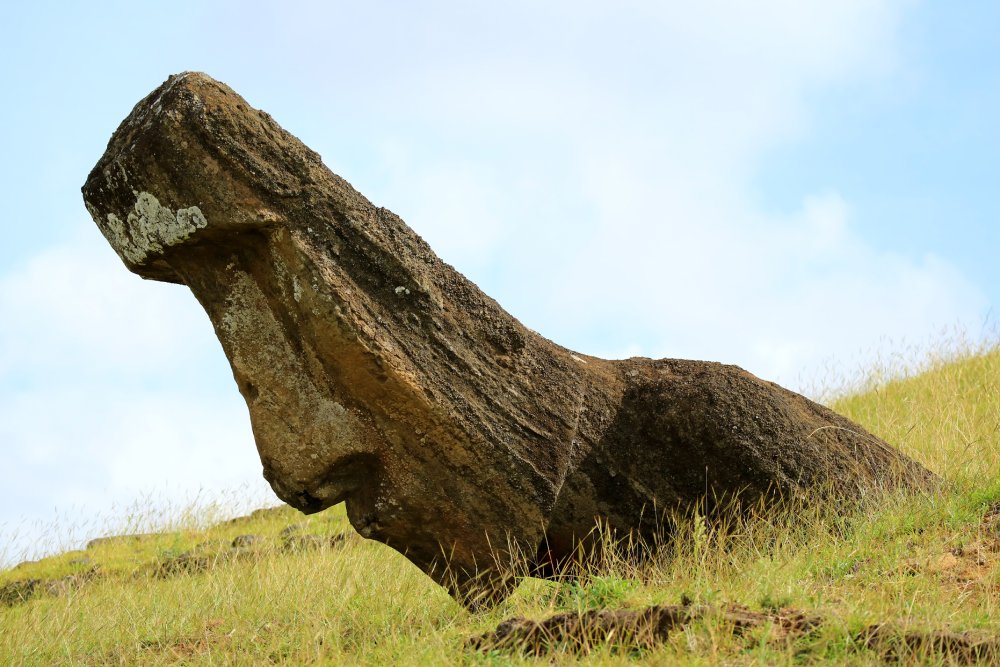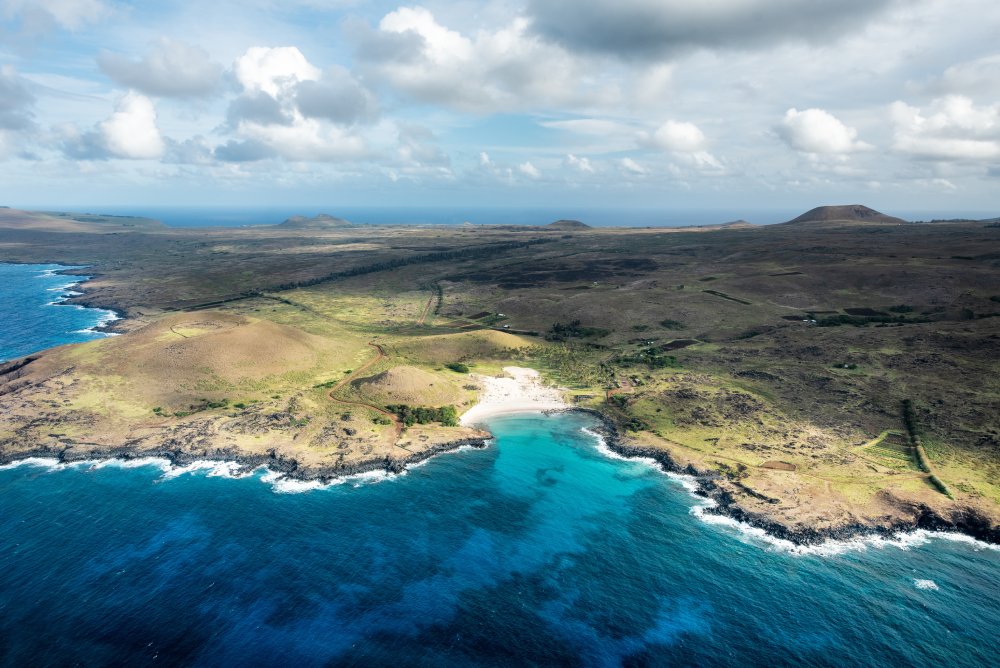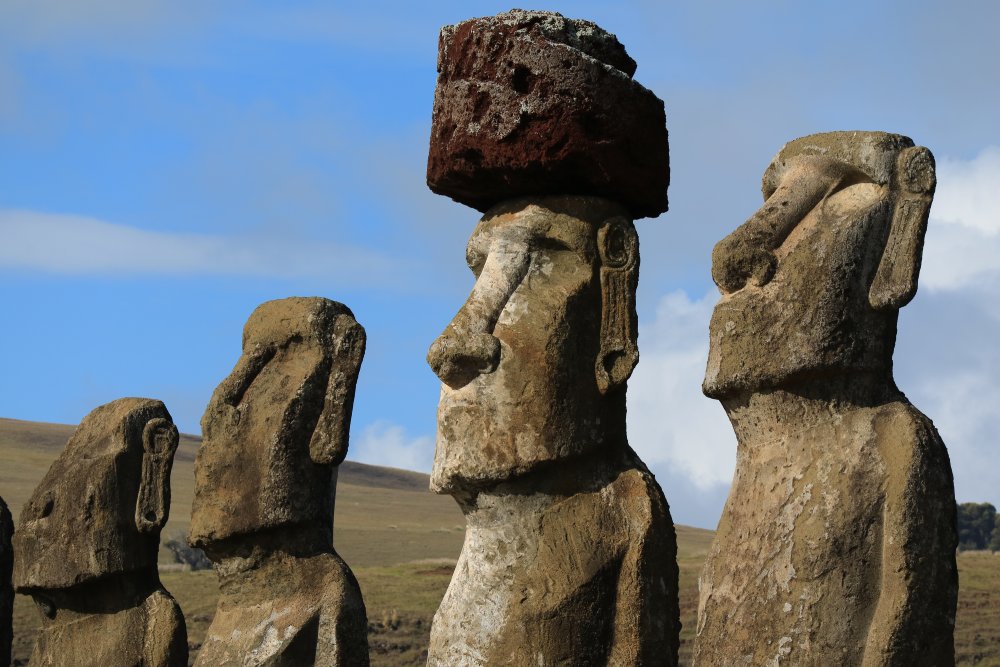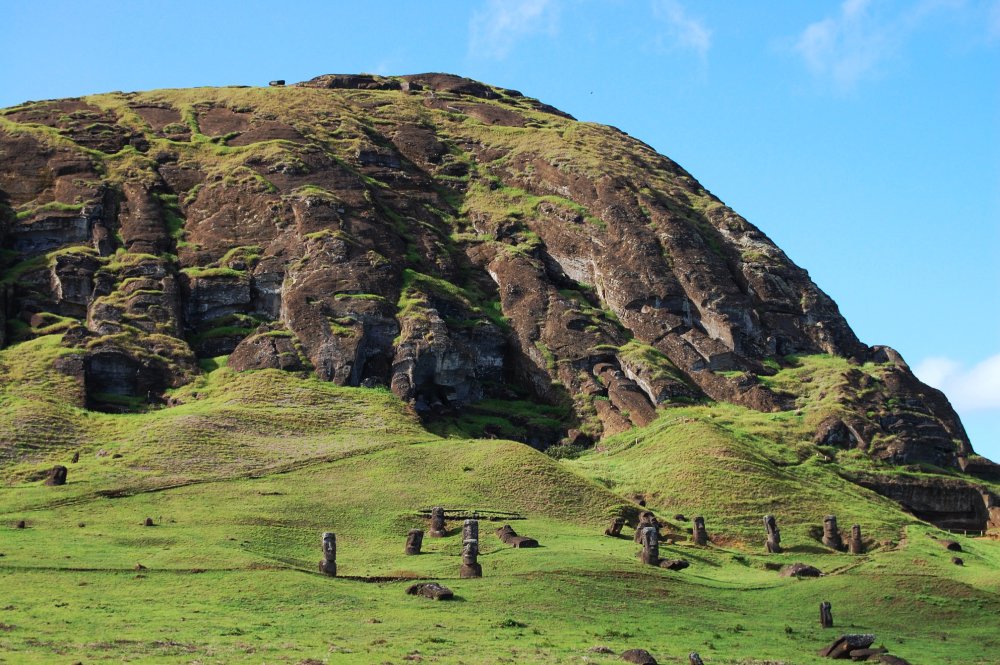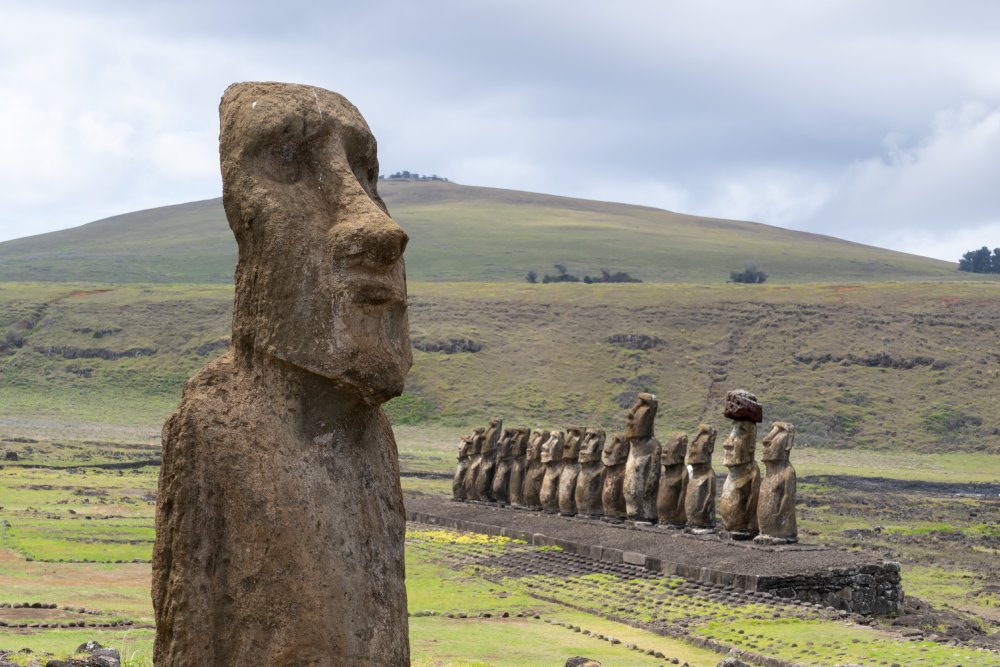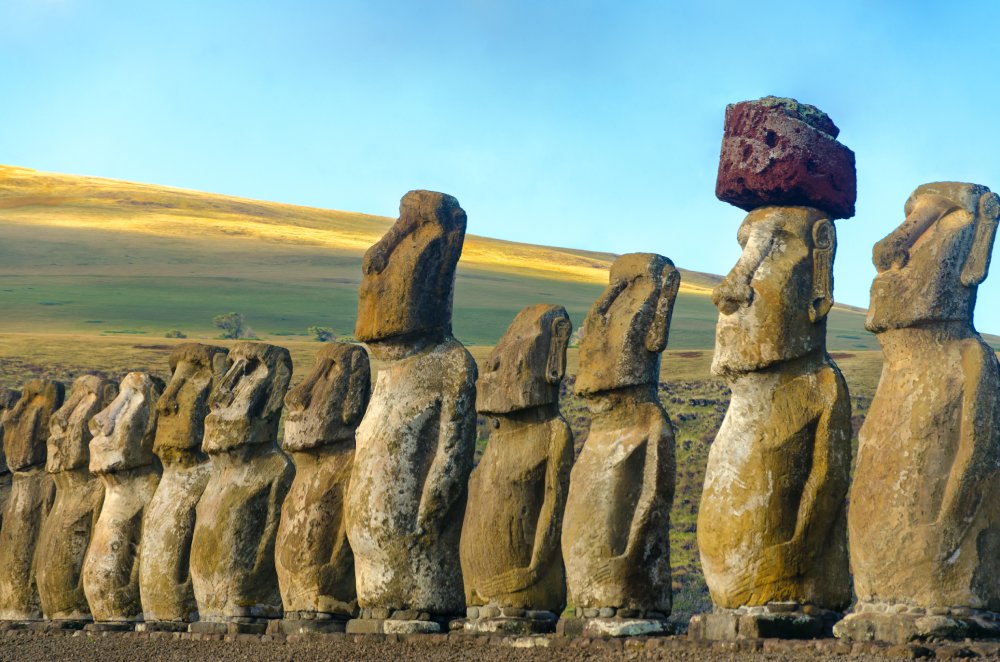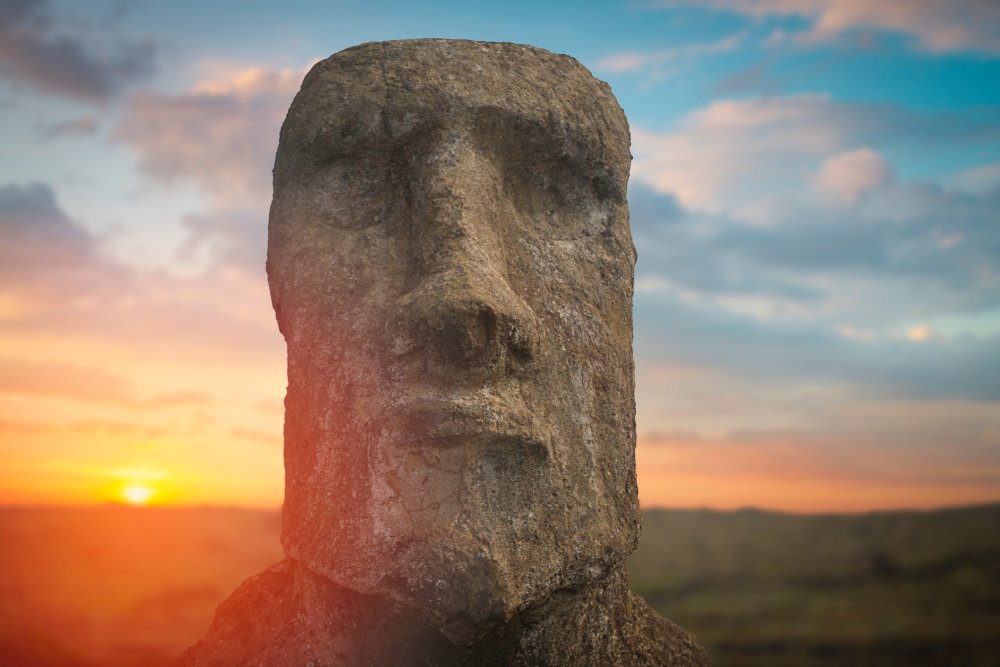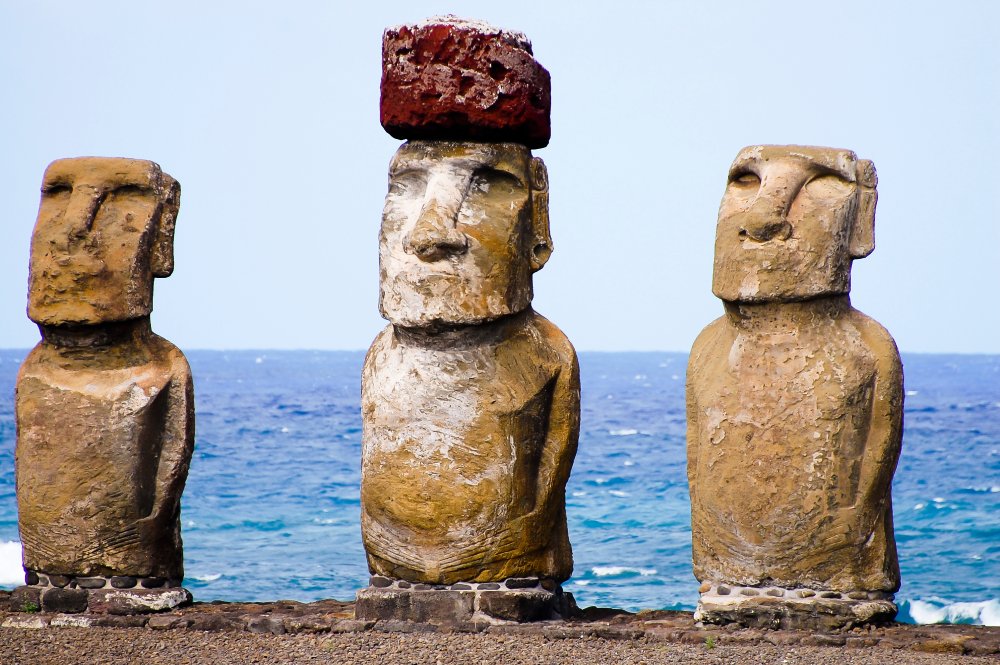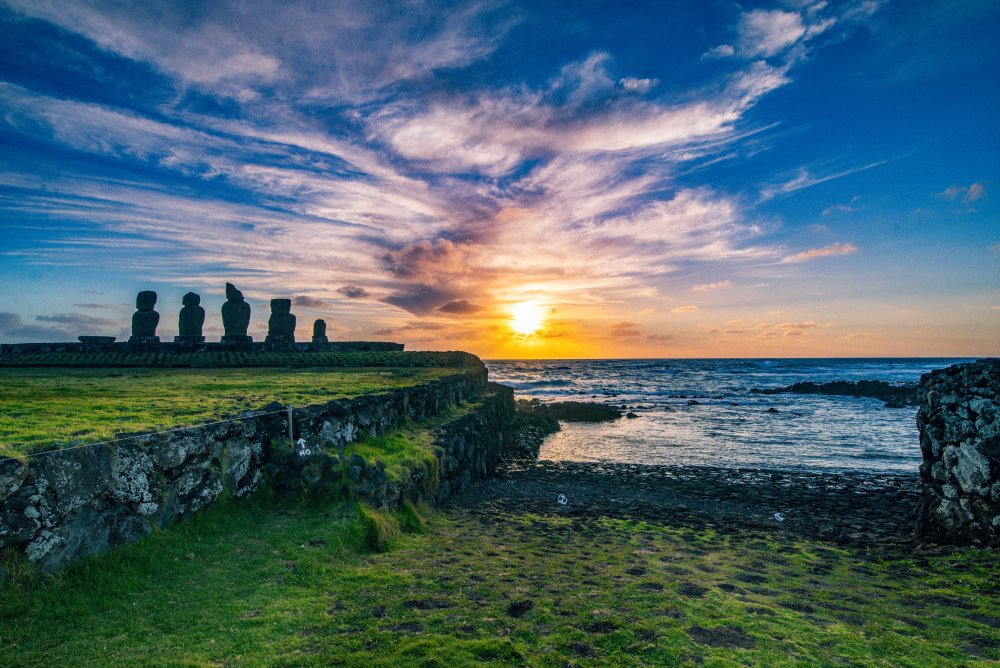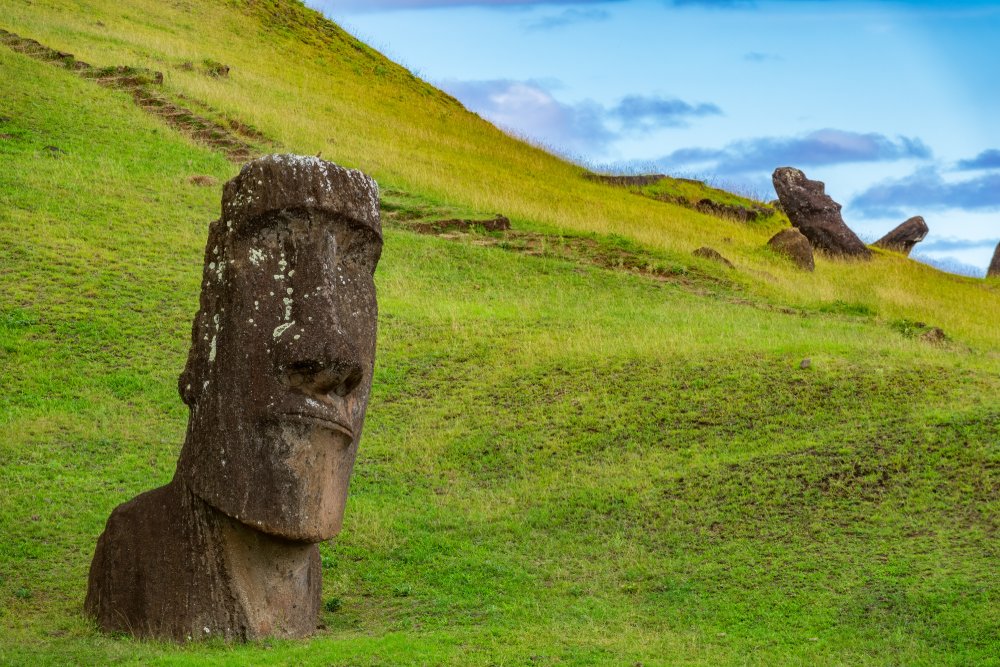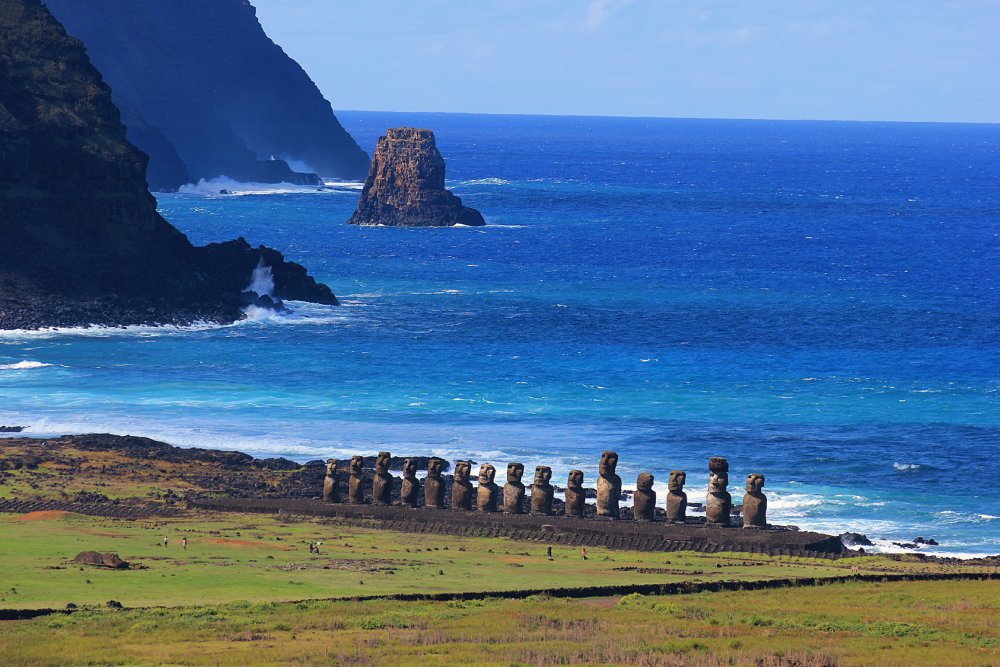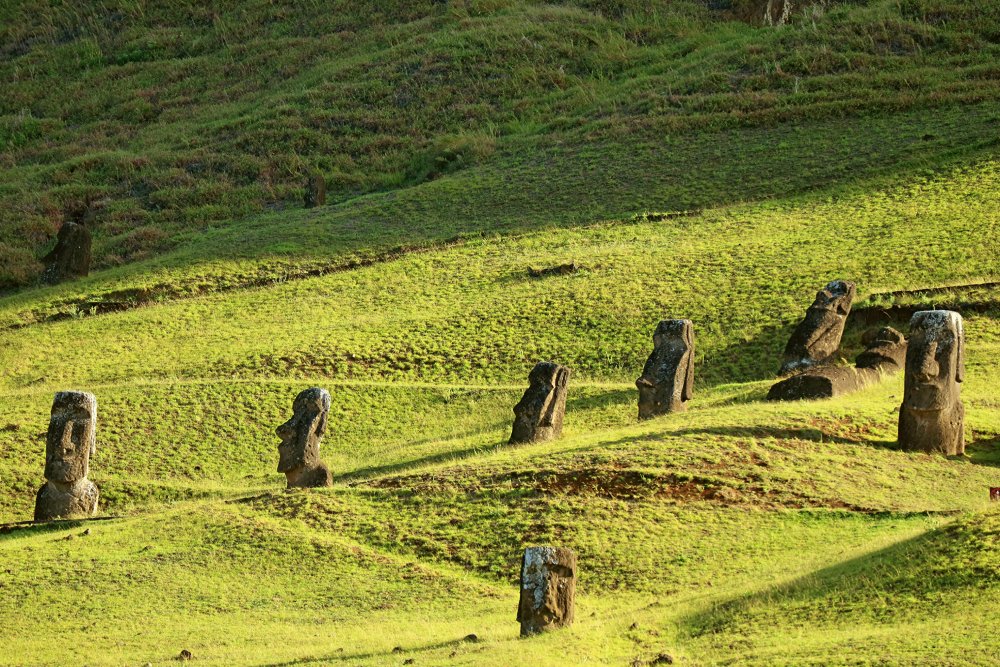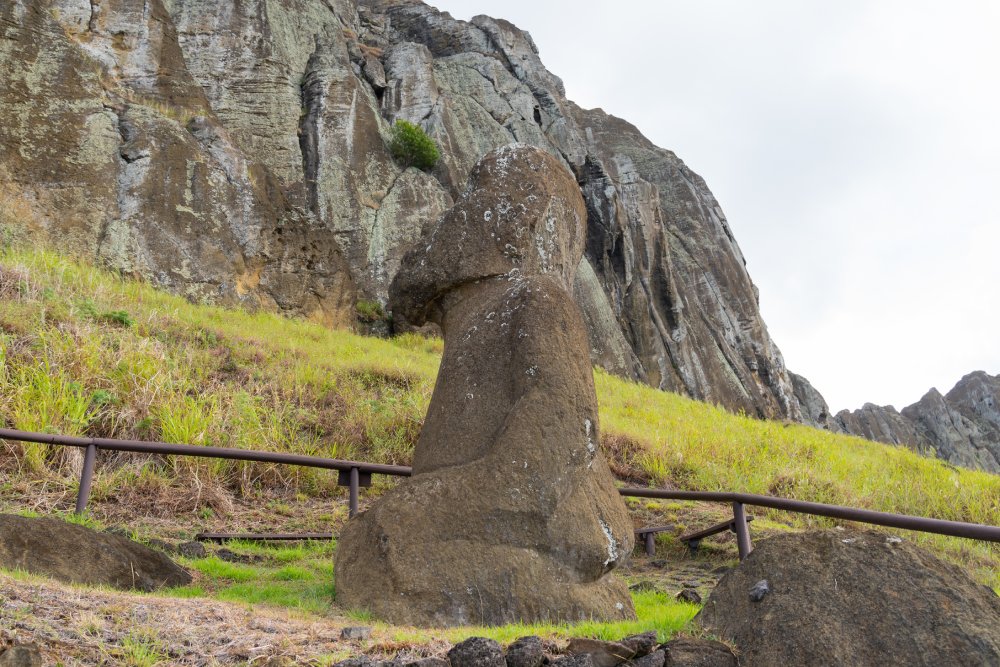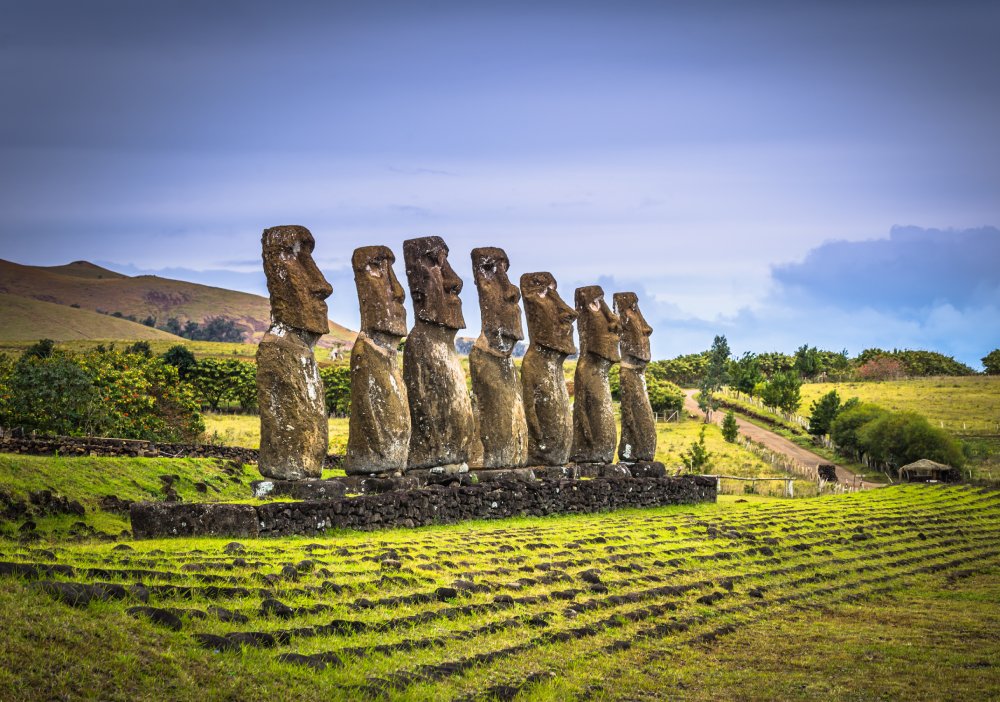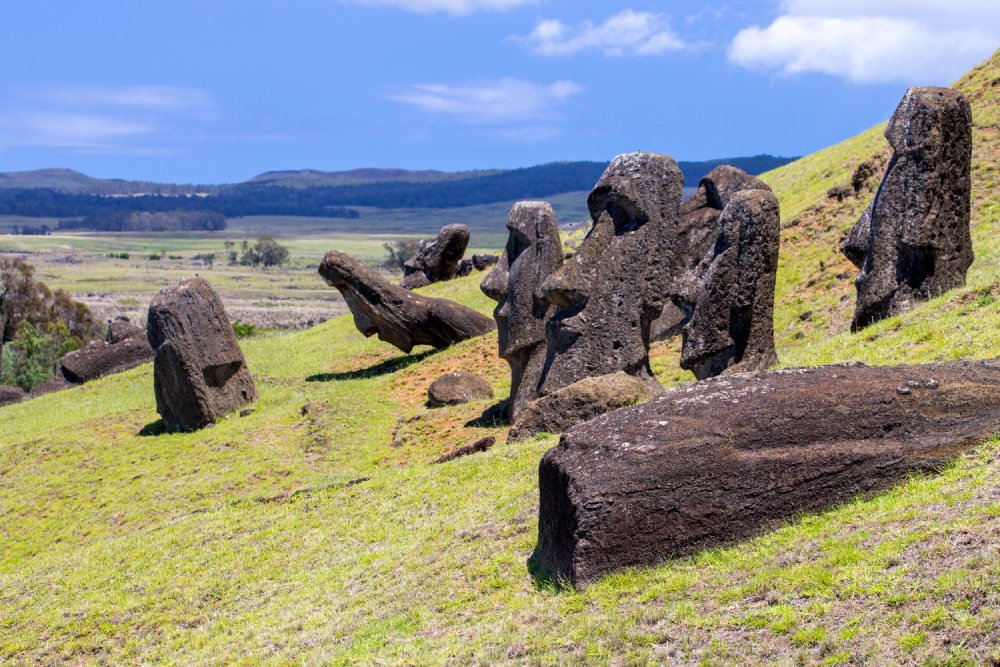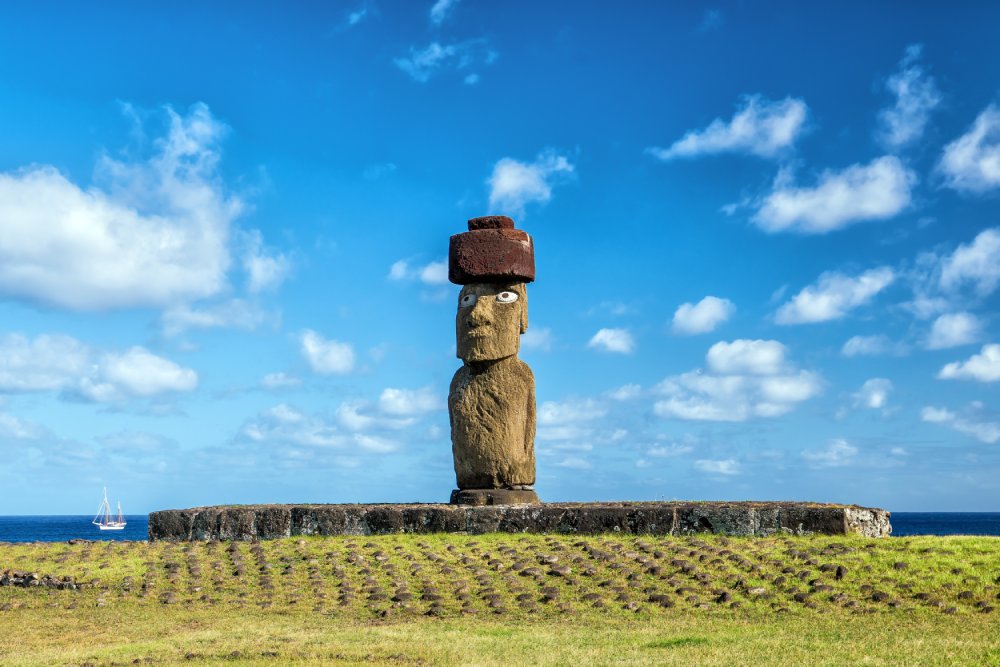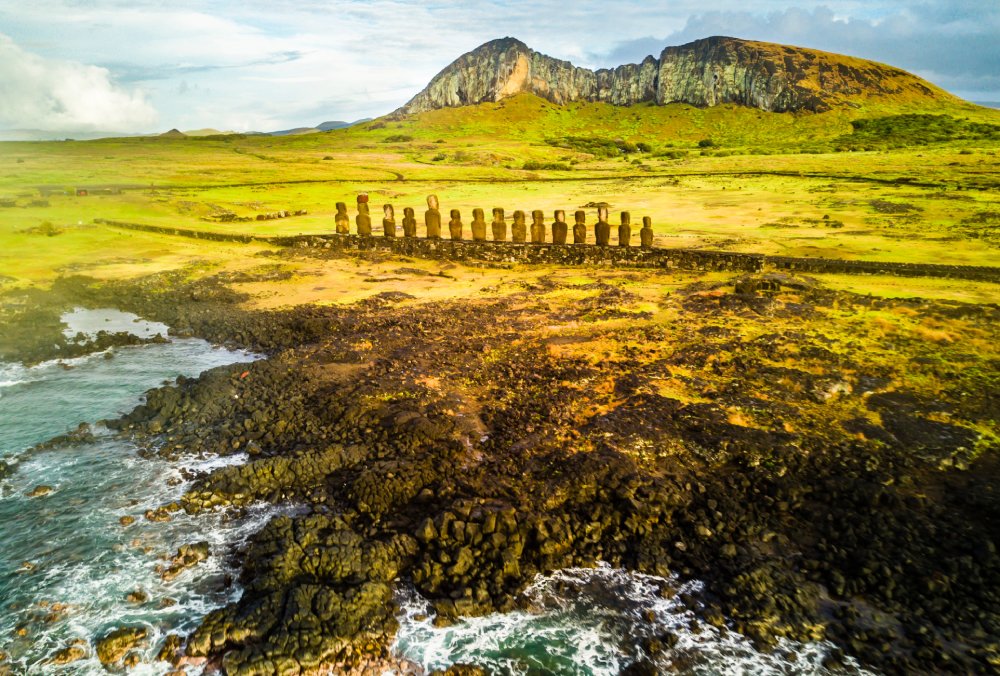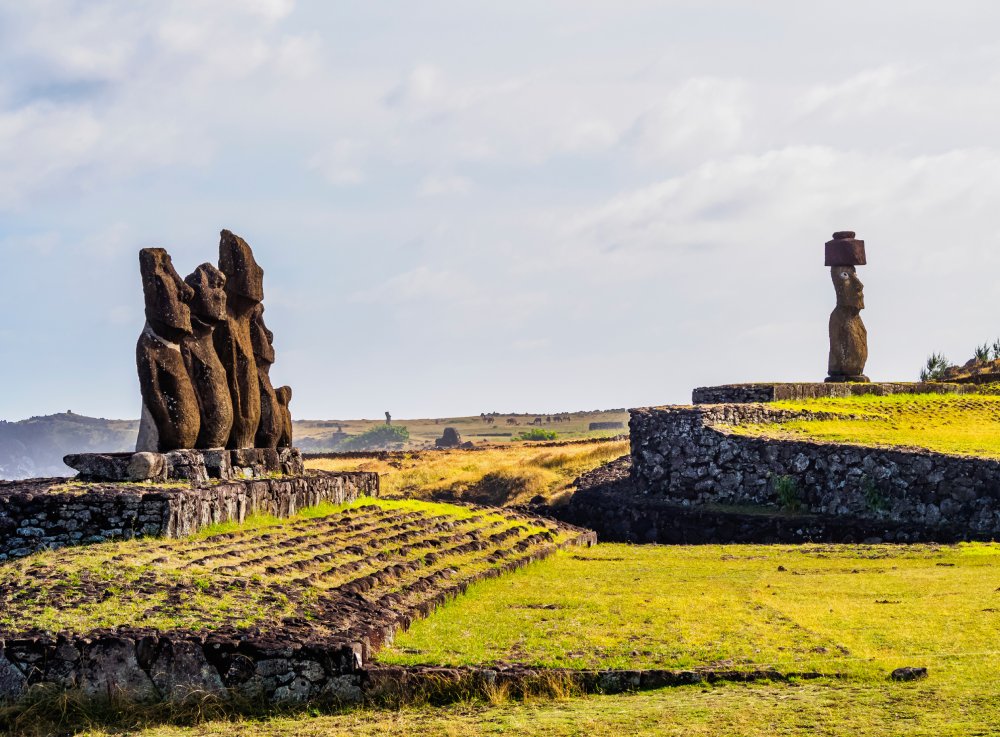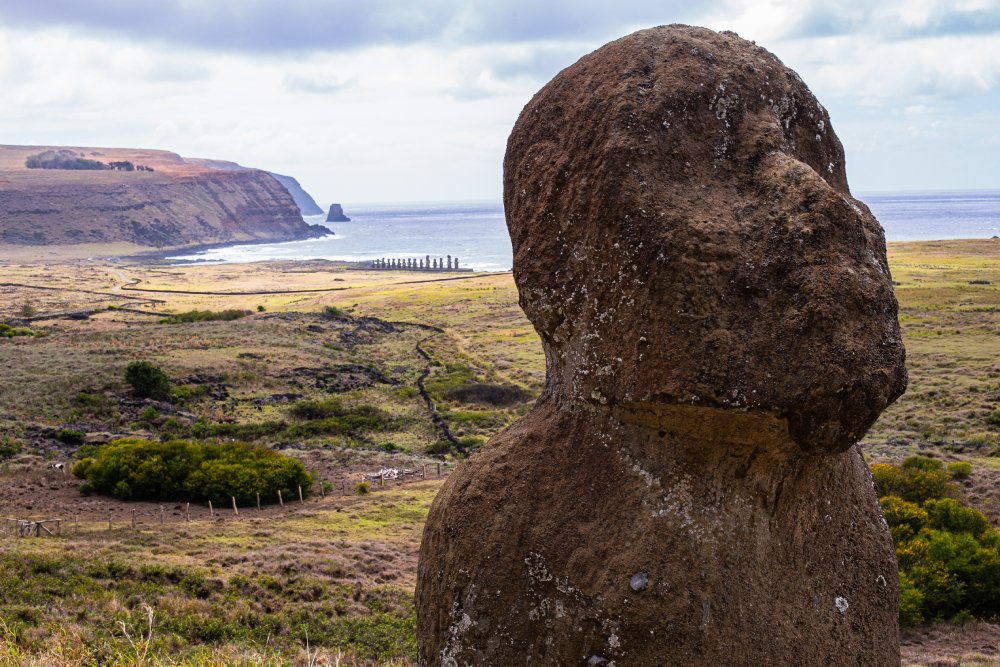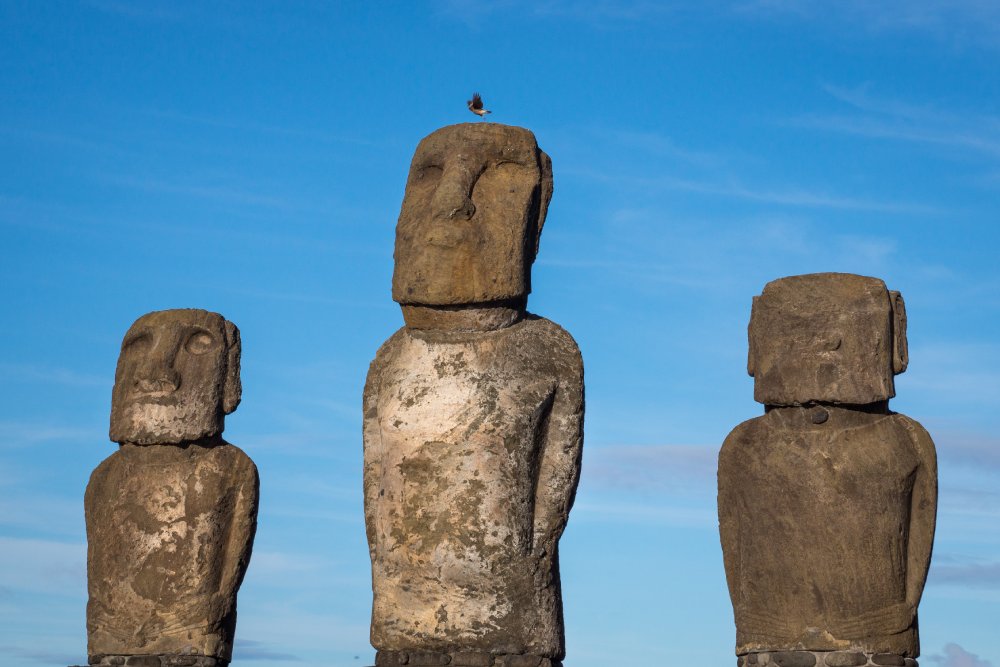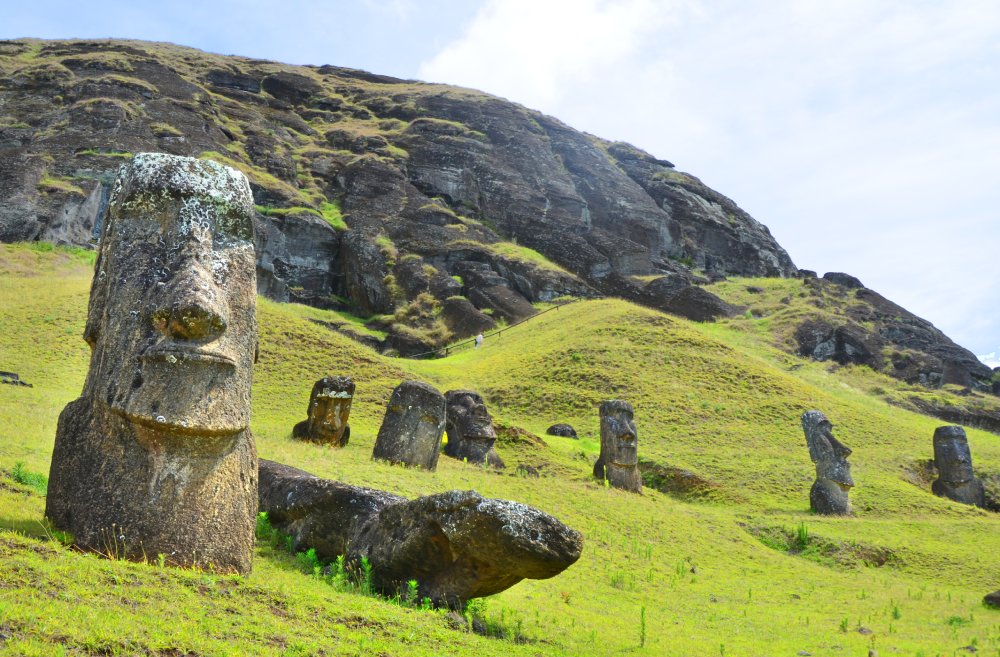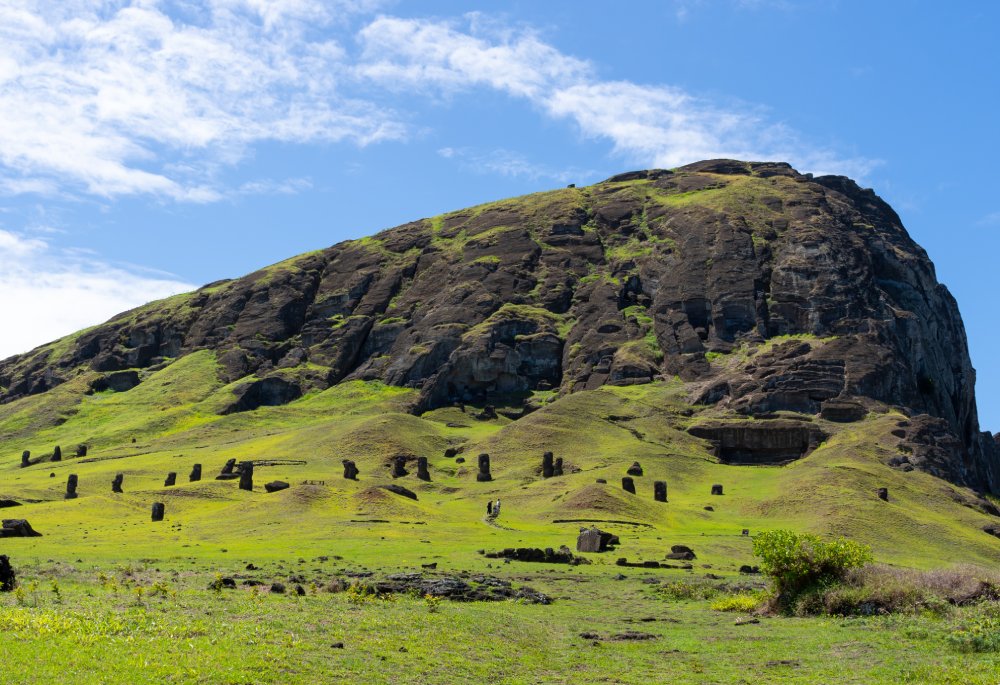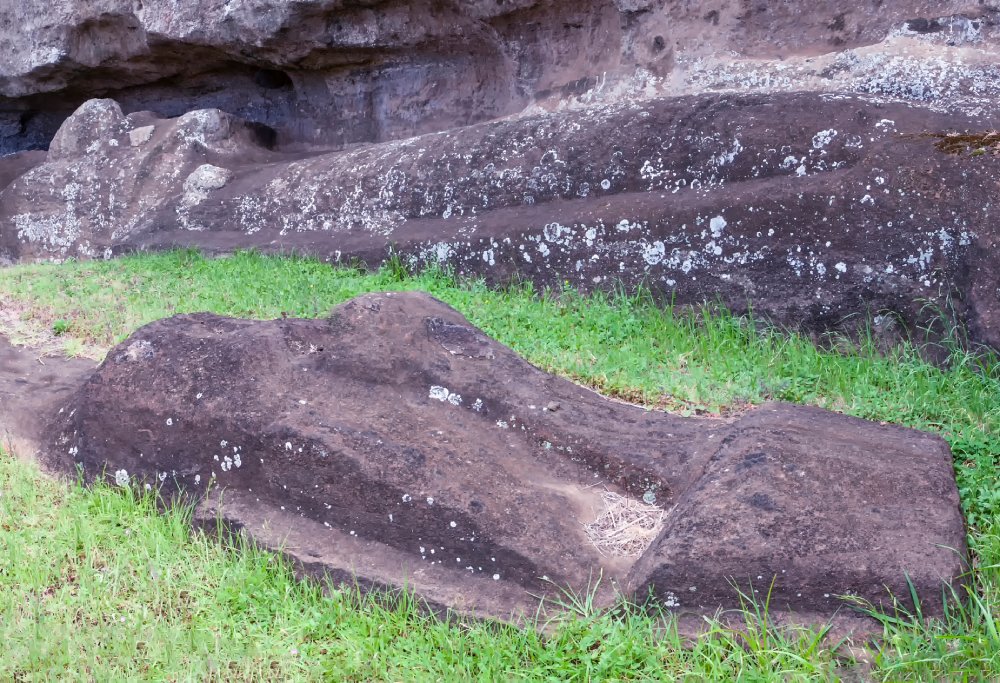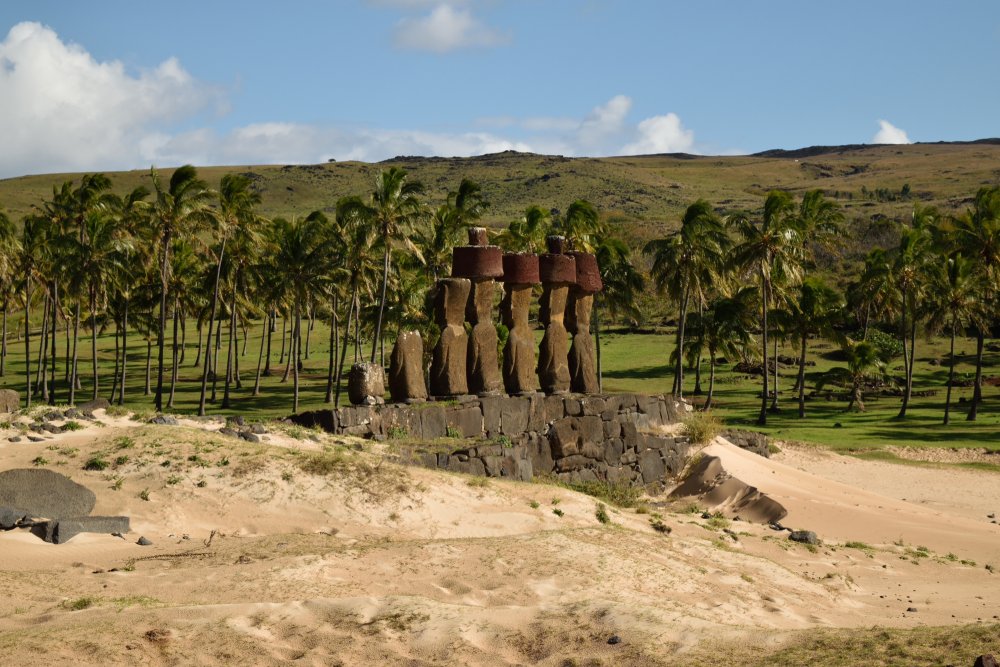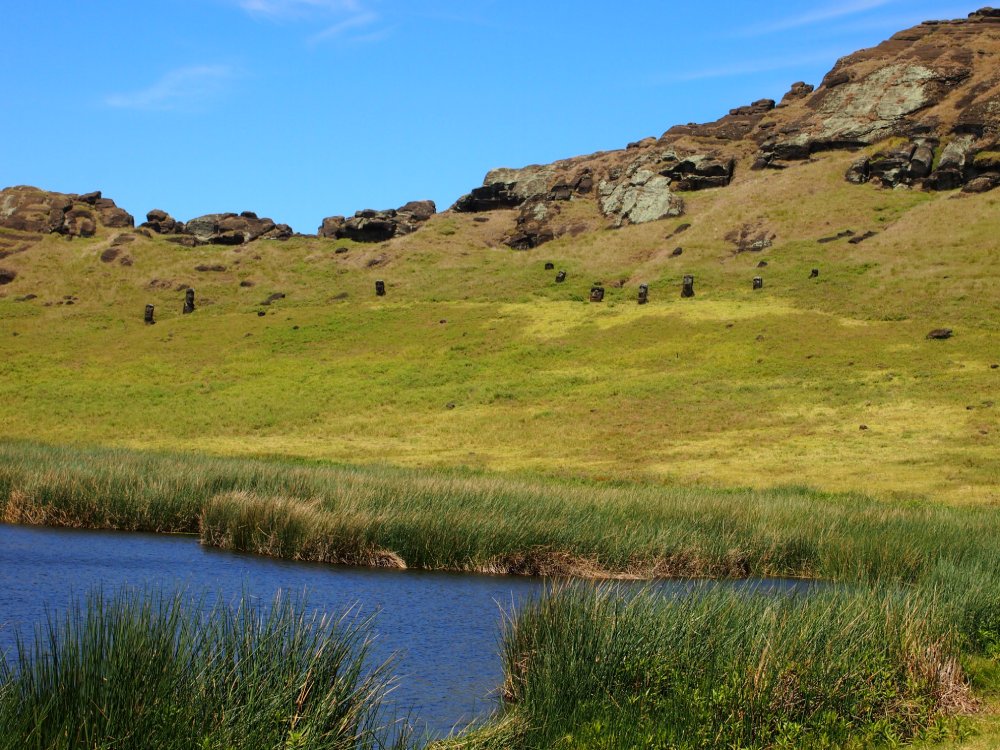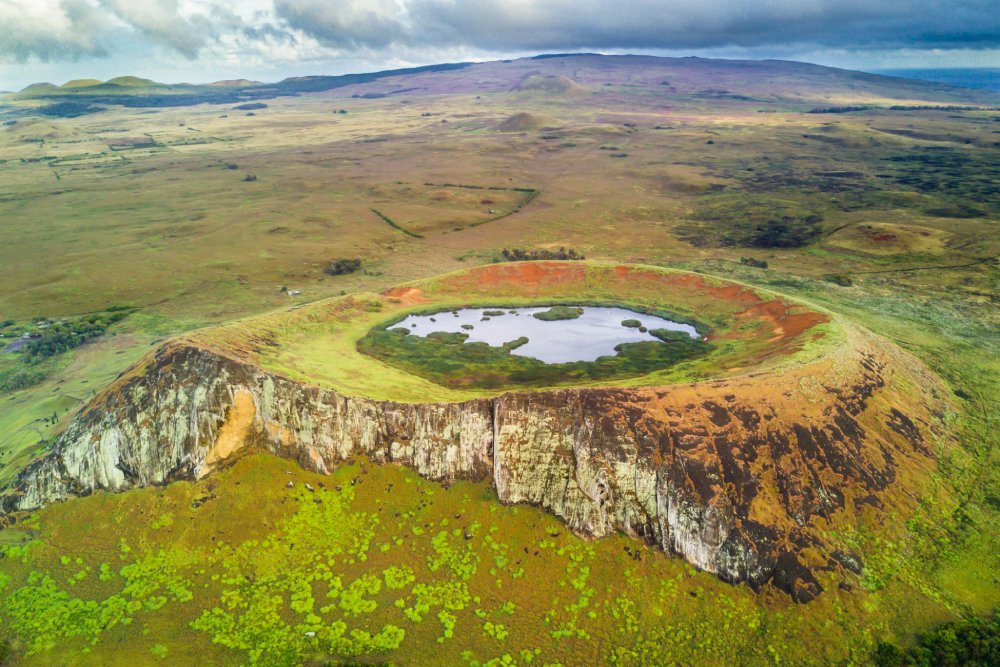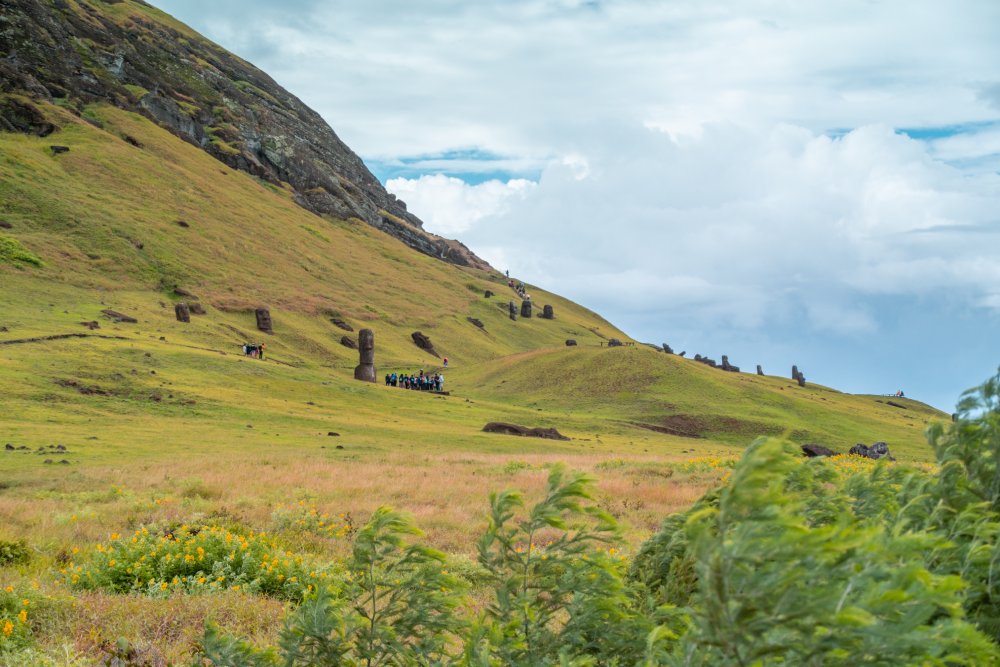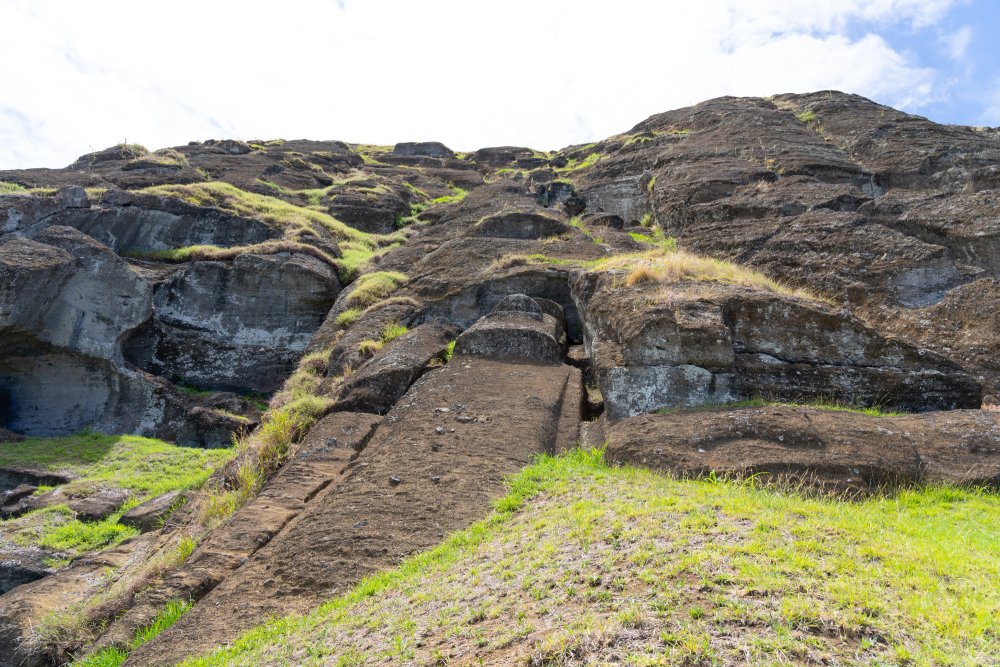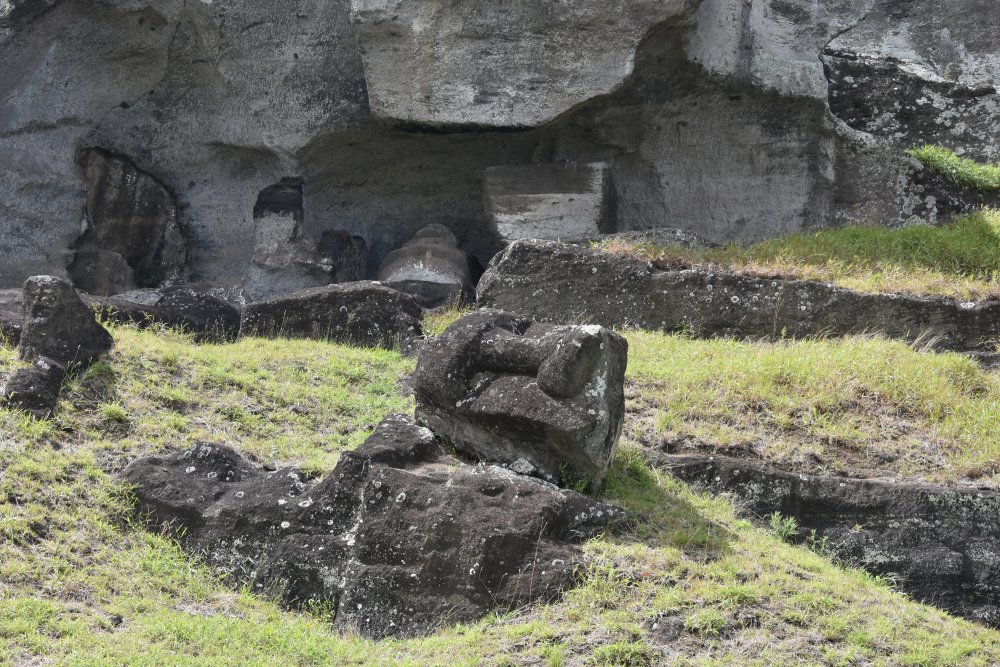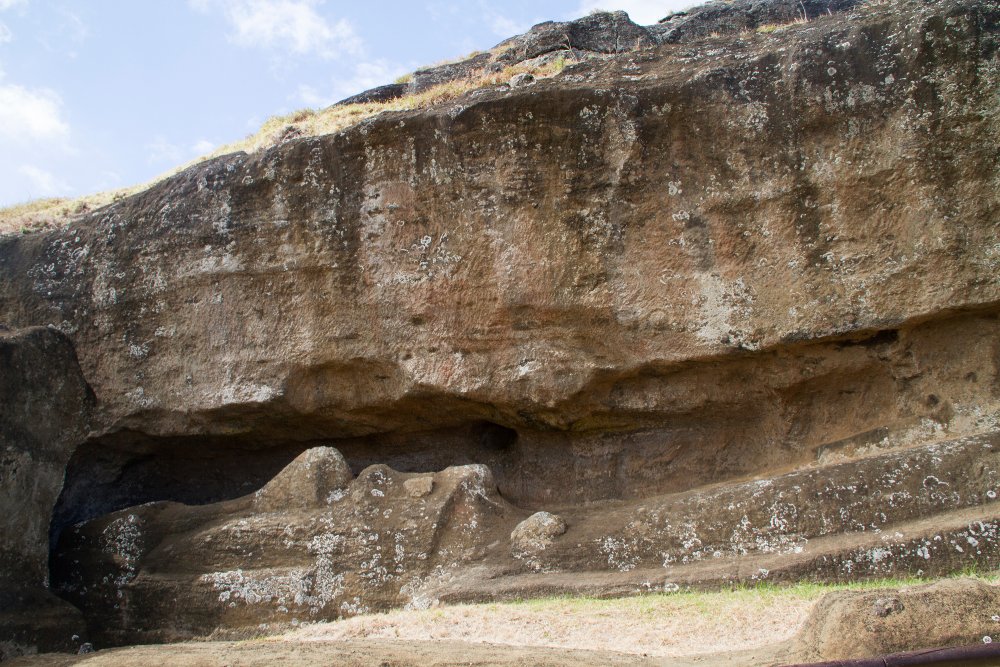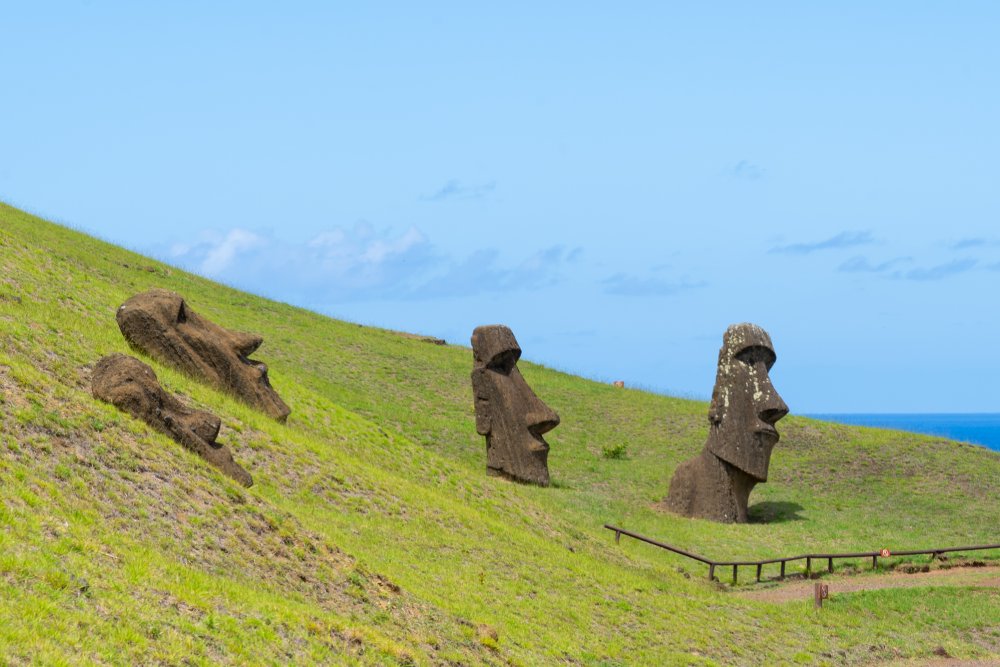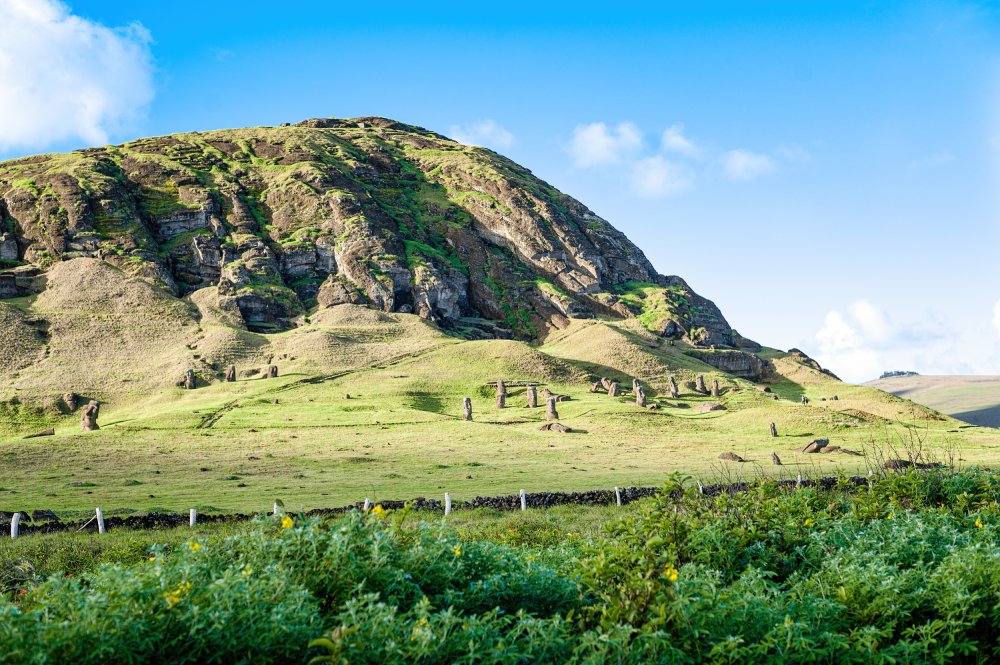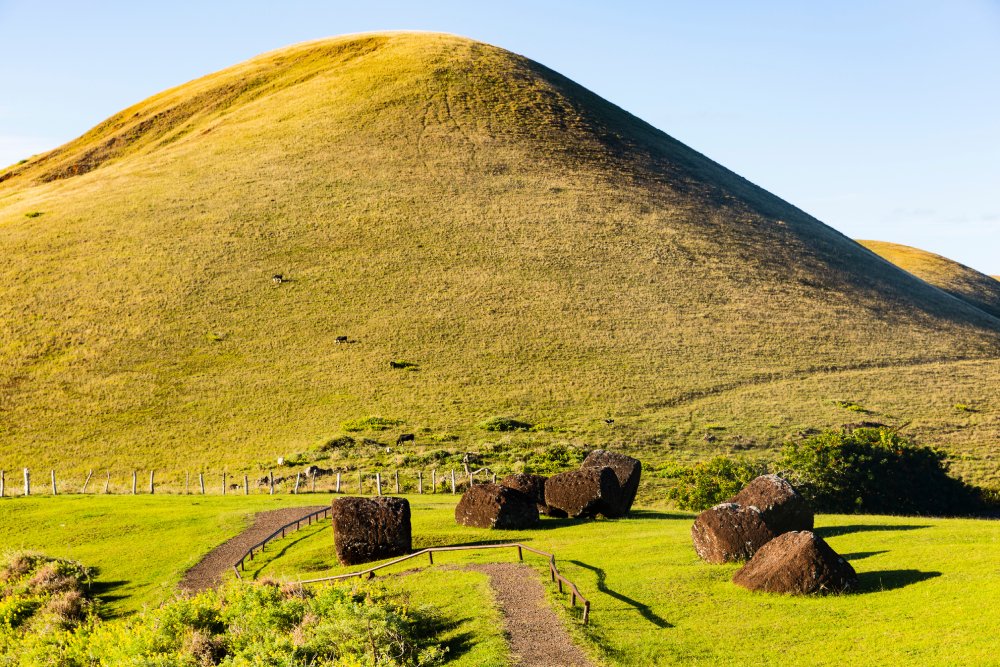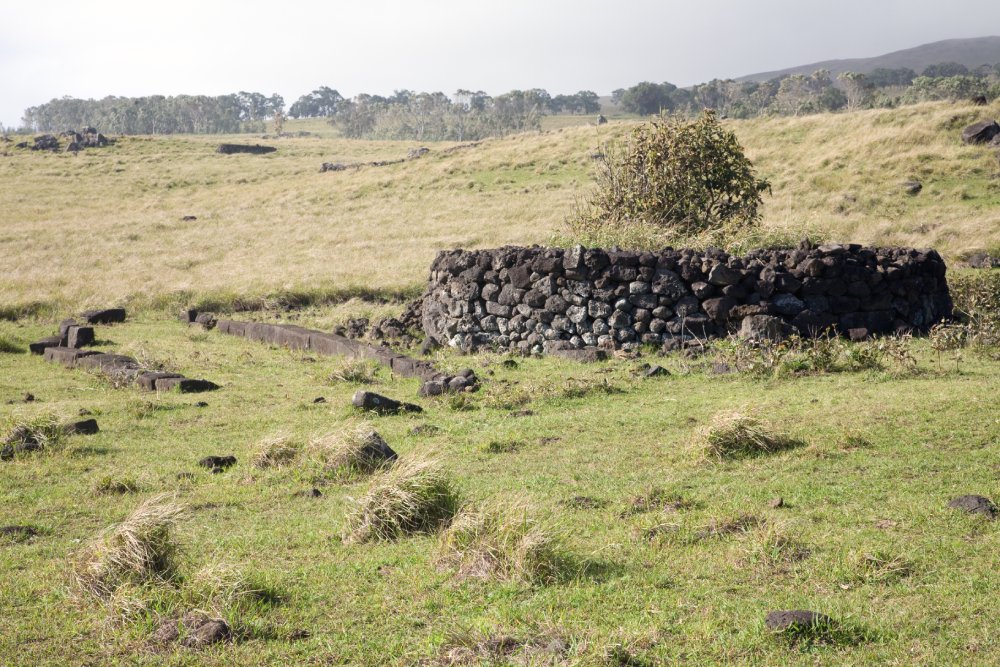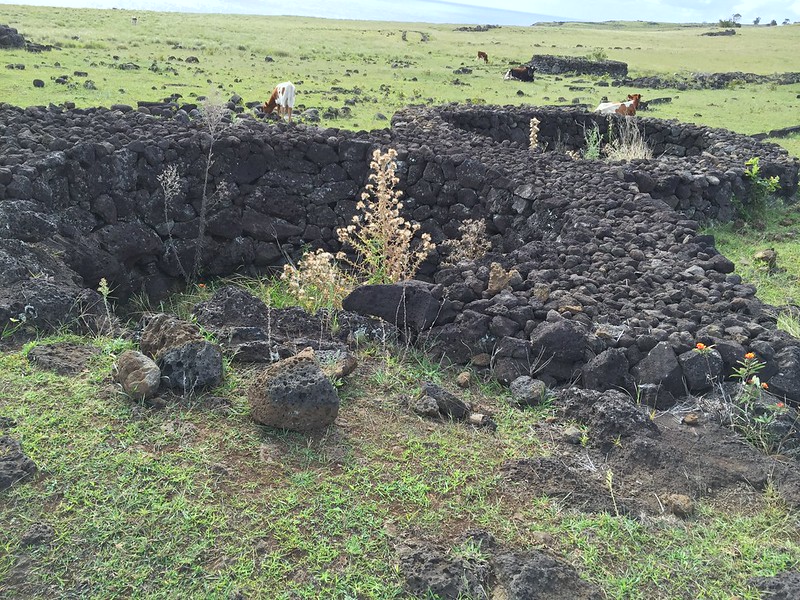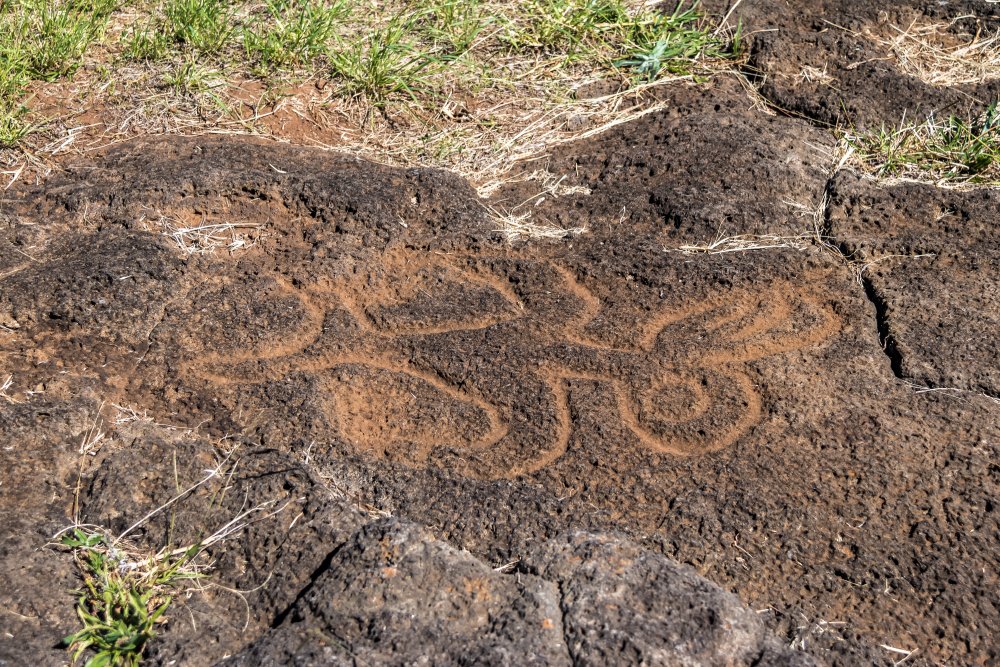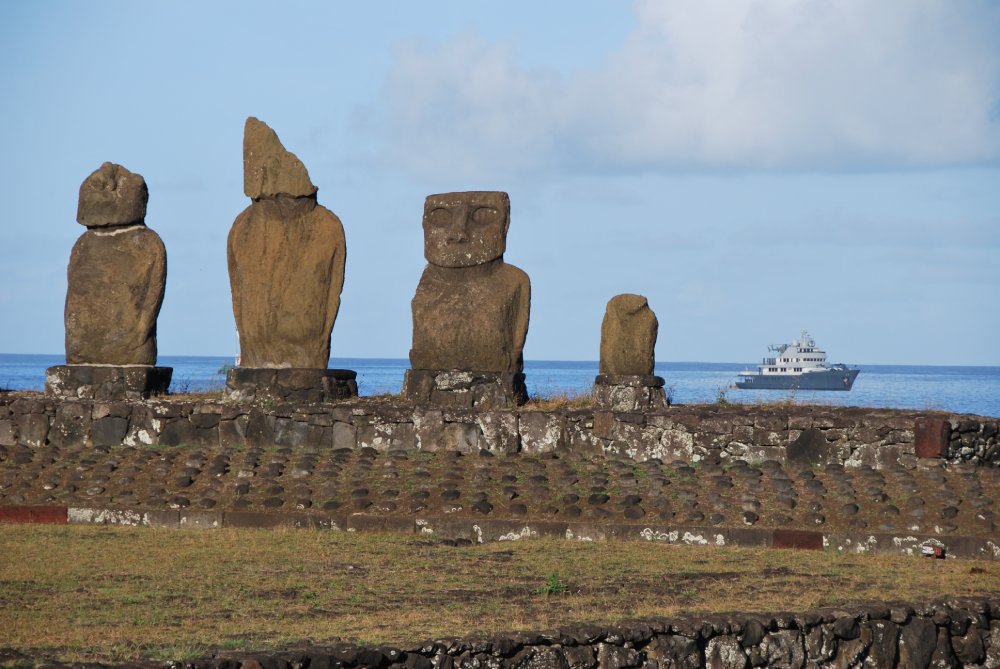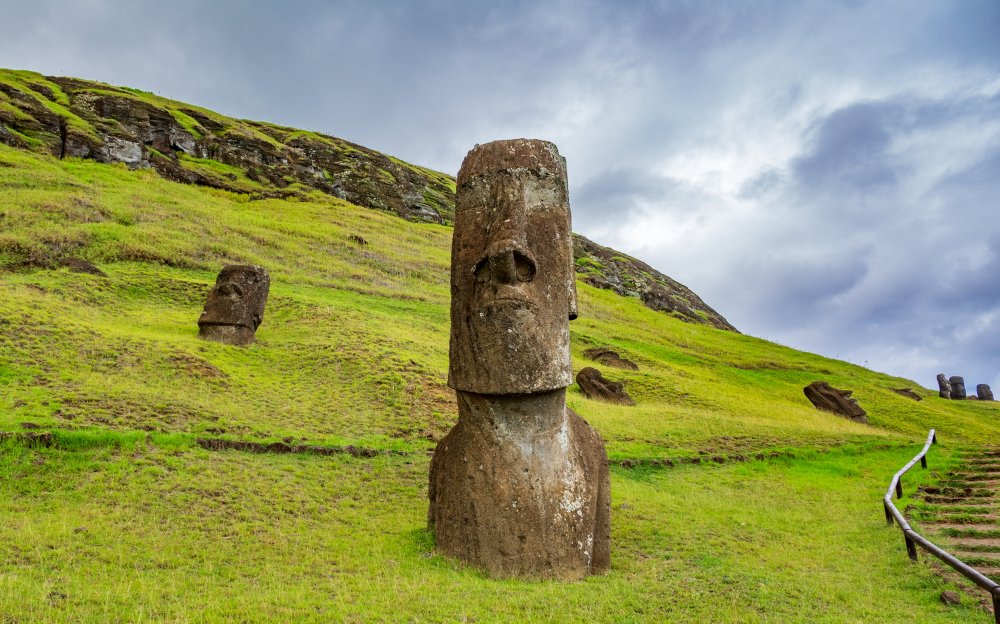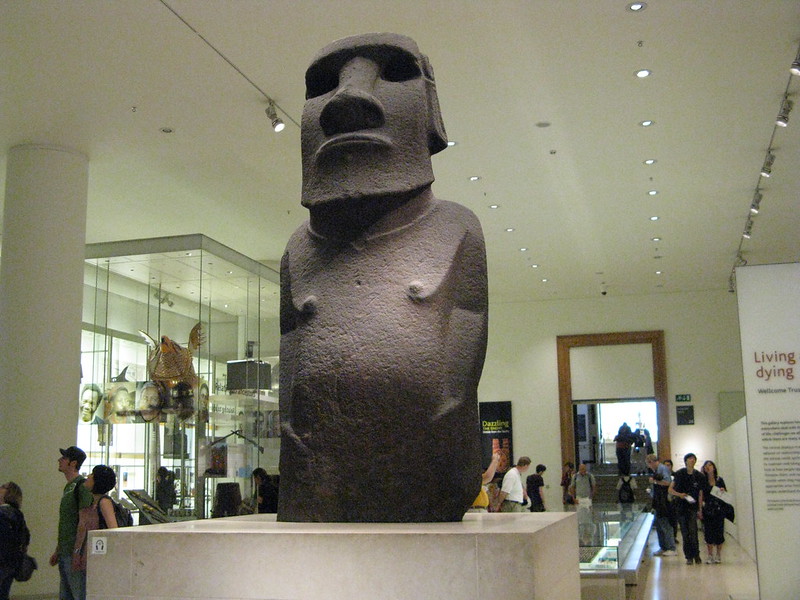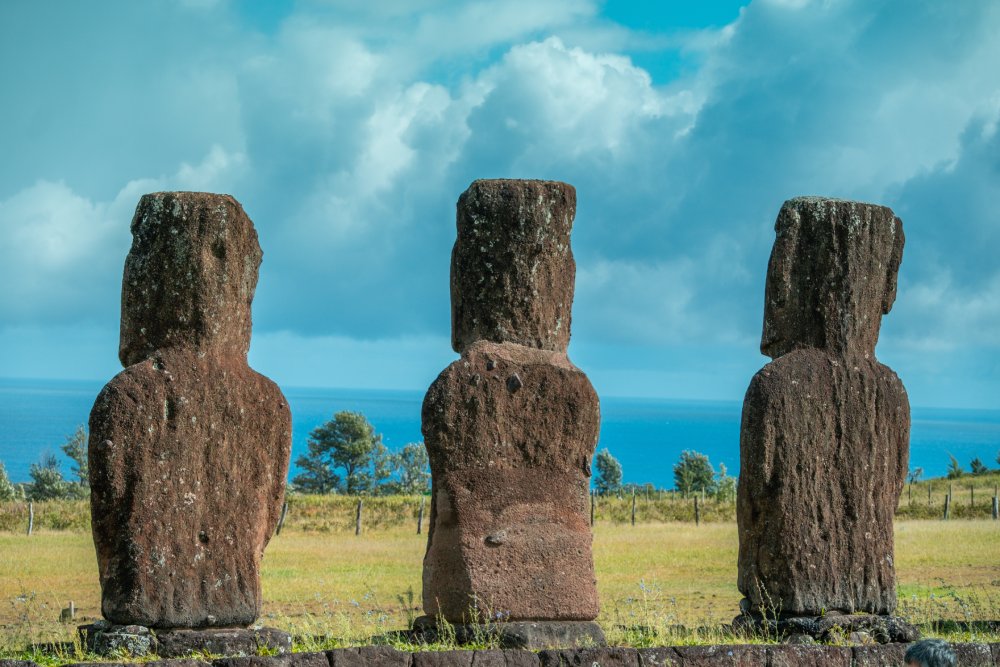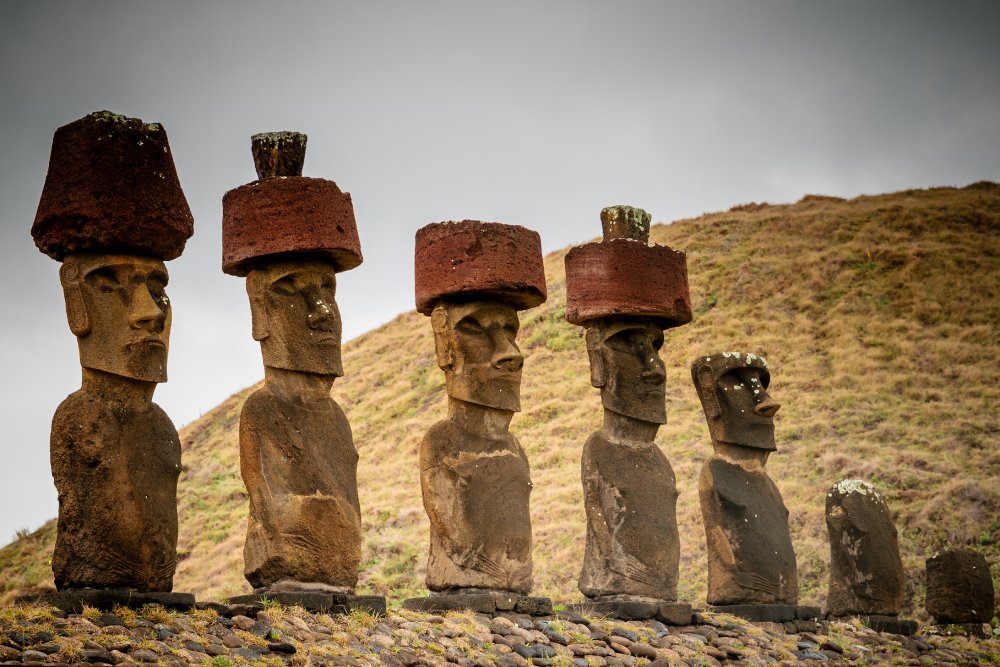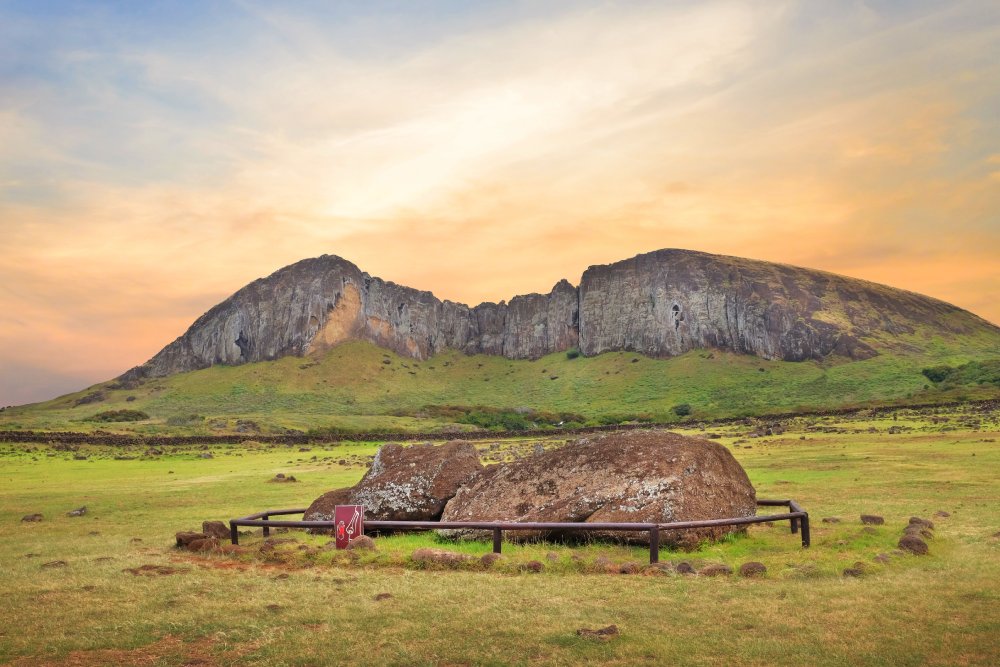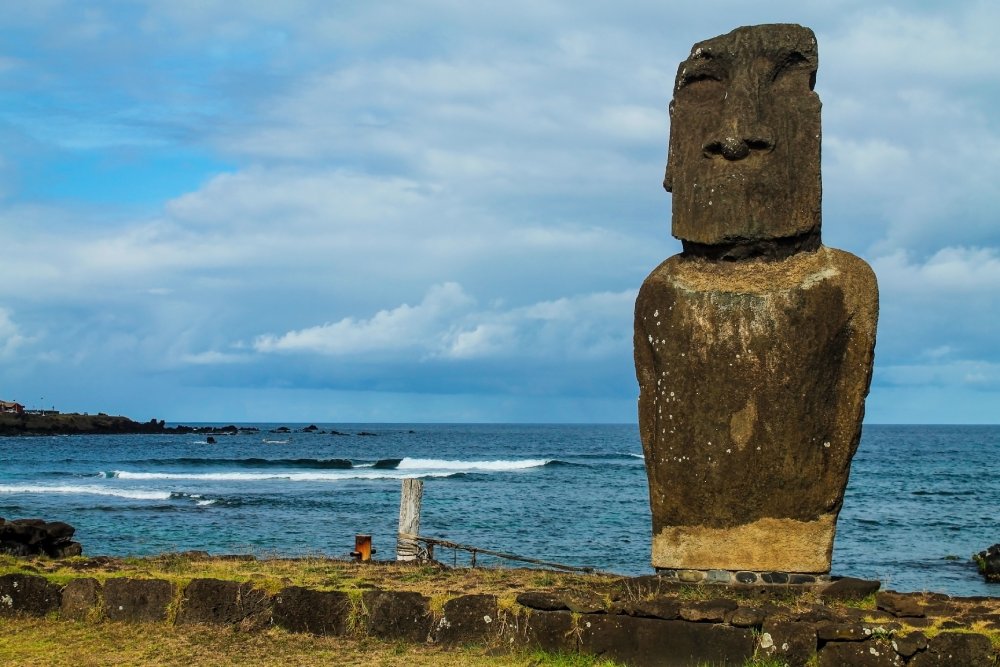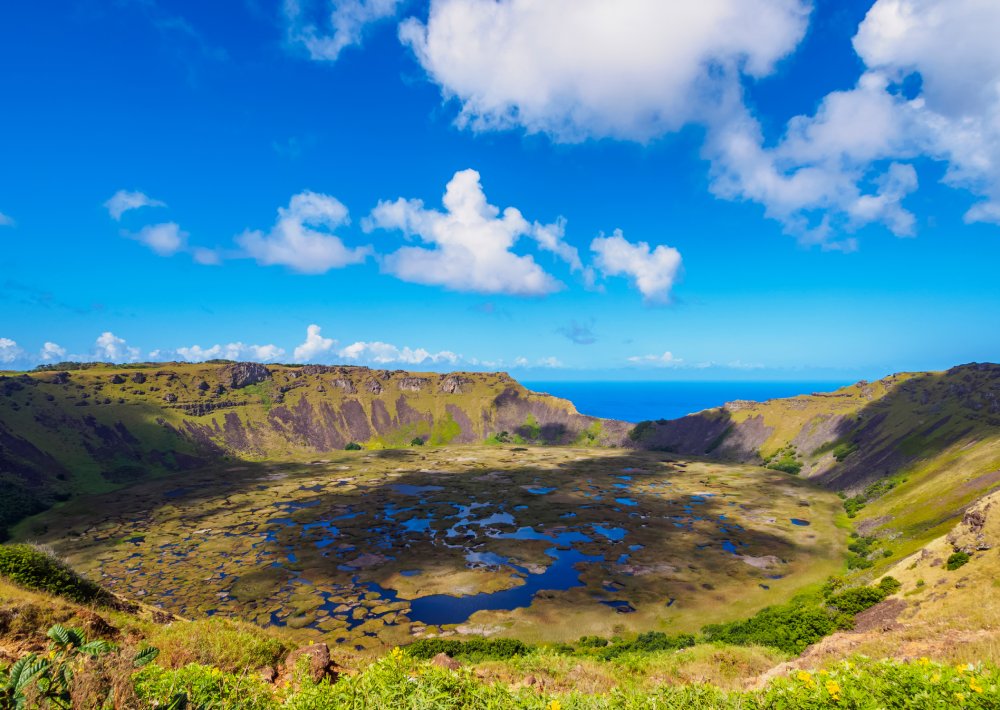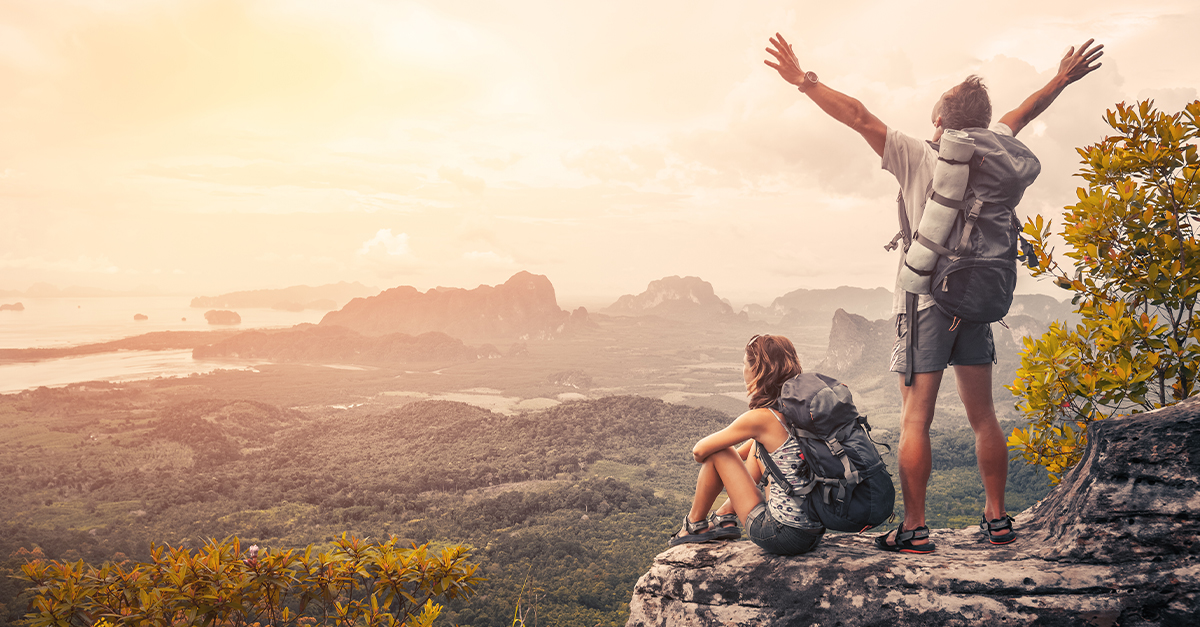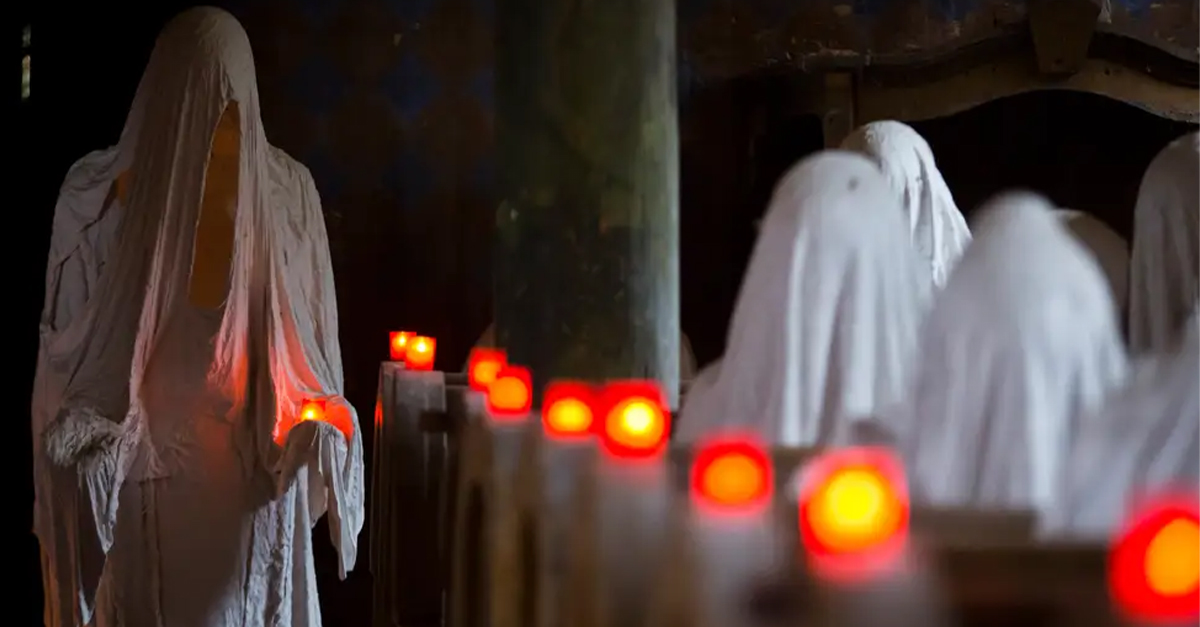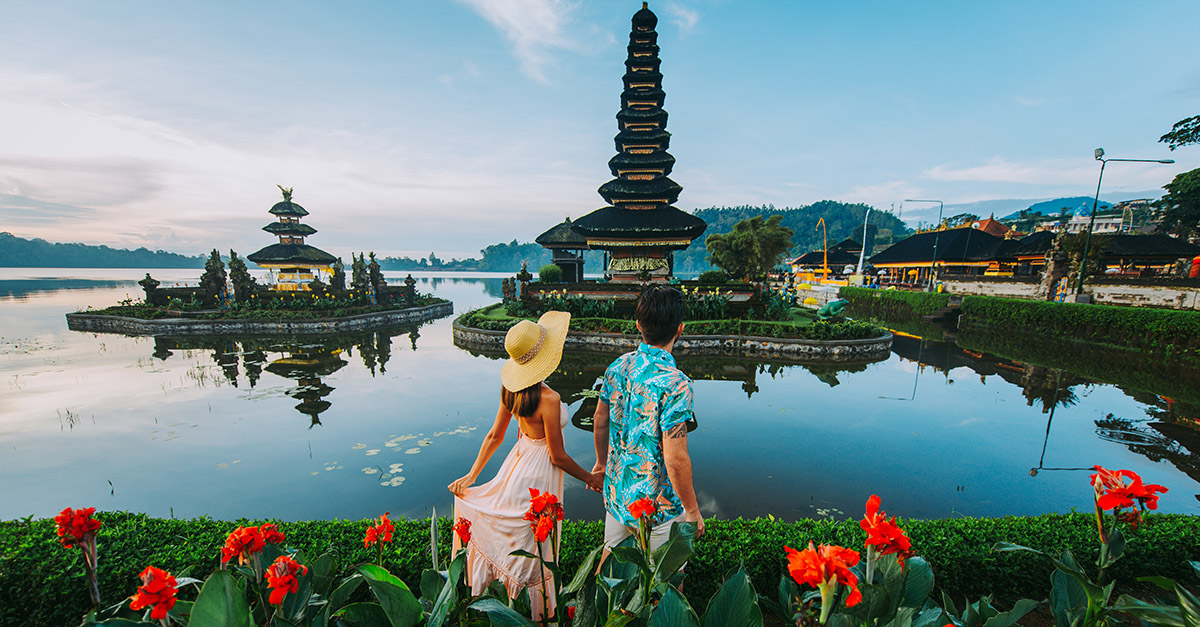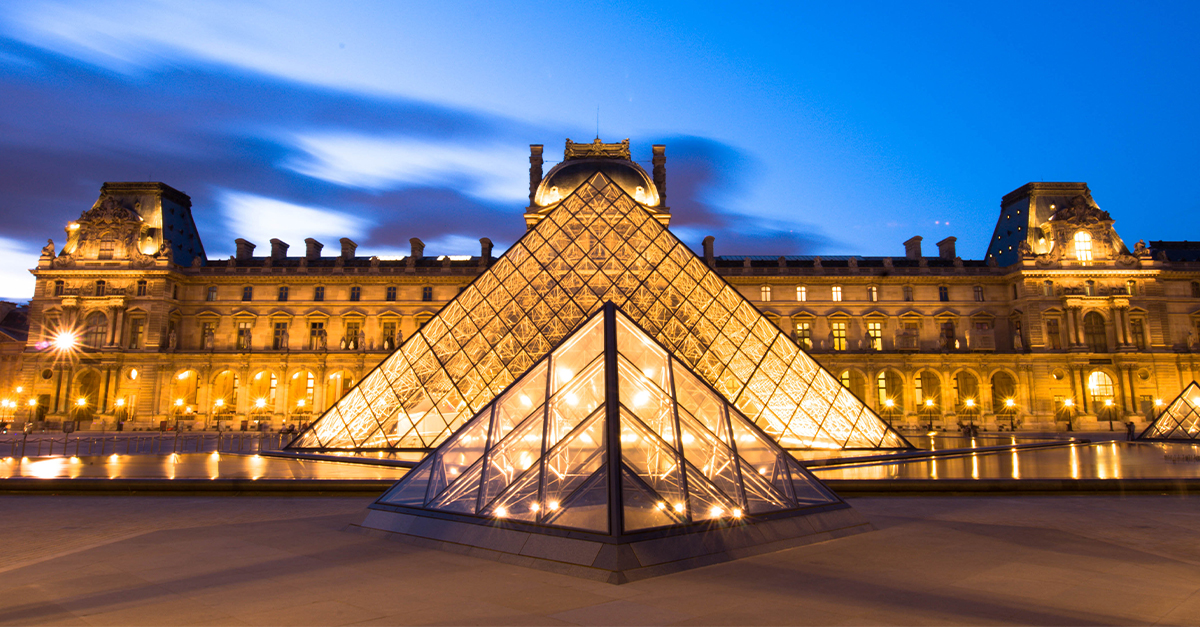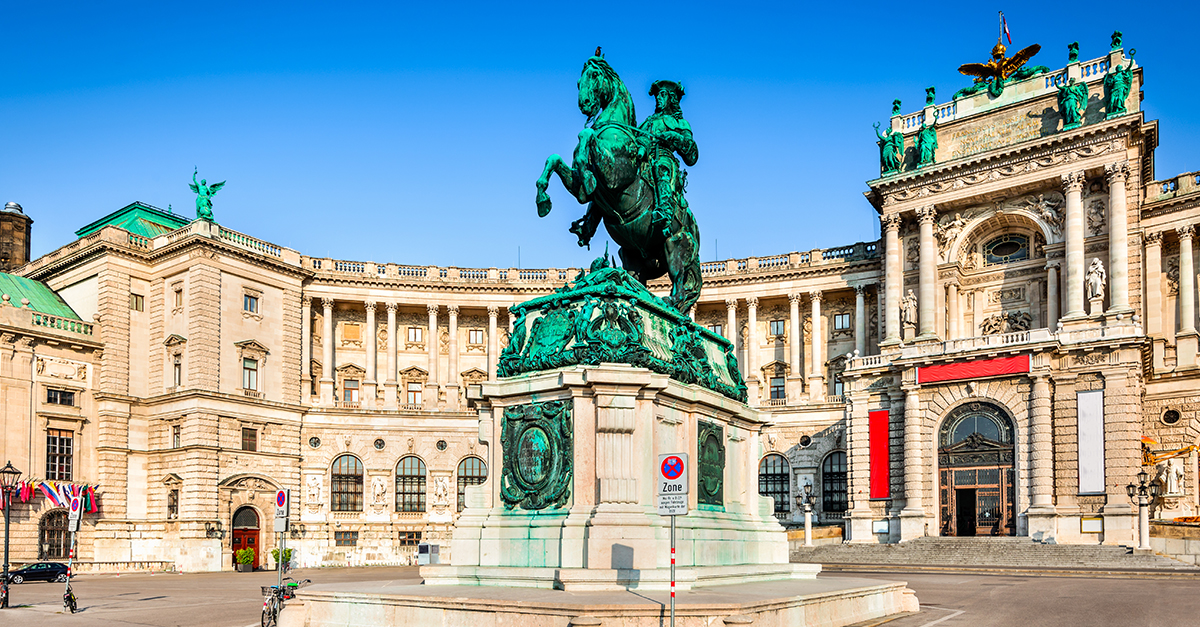An Island In The Middle Of Nowhere
Within Chilean territory, Easter Island is located in one of the most isolated places in the eastern Pacific Ocean, and can only be reached by plane—2,200 miles west of Chile. But though it is quite small, there is something about it that sets it apart from every other island in the world.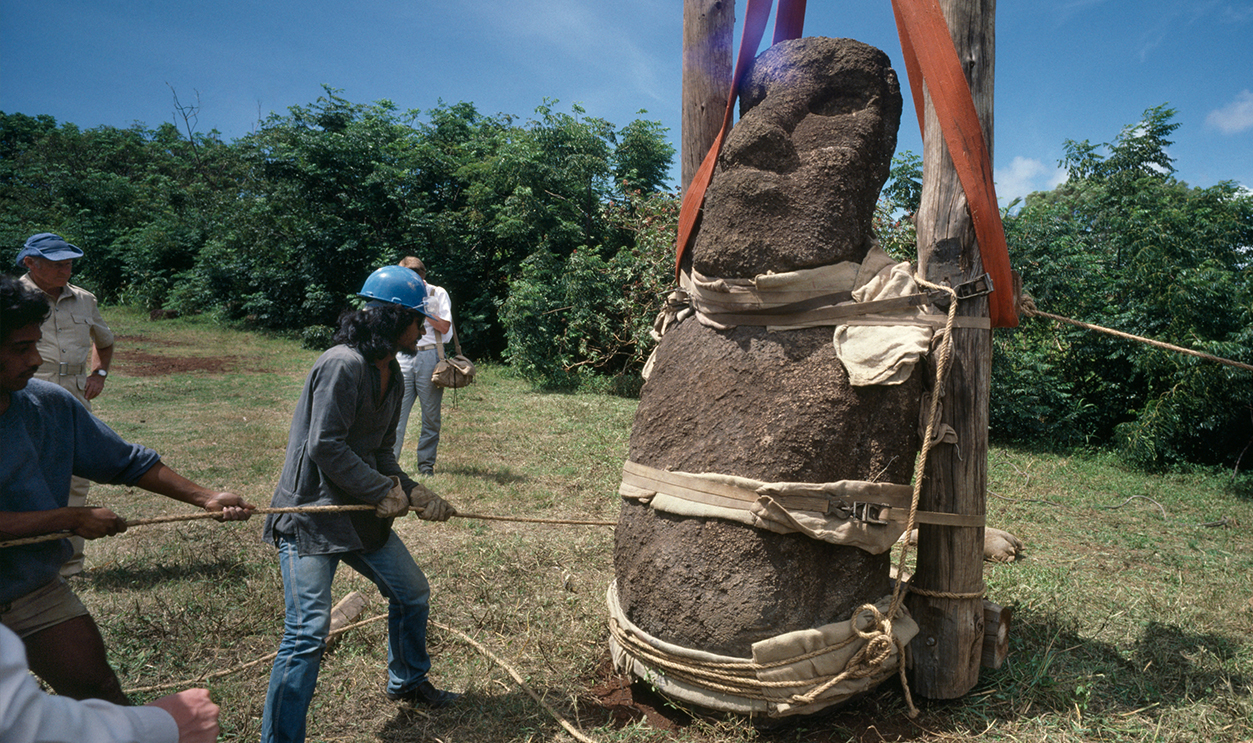
The Island's Discovery
On Easter Day in 1722, the Dutch explorer Jacob Roggeveen accidentally discovered the remote island—and, unsurprisingly, he dubbed it Easter Island. Made of different kinds of volcanic rock, this island harbors one of history's greatest mysteries.
Hundreds Of Statues
Easter Island (Rapa Nui) boasts over 900 incredible statues. These statues range in size, the largest standing at over 30 feet tall, while the heaviest weighs over 85 tons.
Easter Island Heads
Created between 1250 and 1500, these awe-inspiring structures have often been called "Easter Island Heads". However, the more accurate name for them is "moai"—especially considering they are so much more than just "heads".
They Actually Have Bodies
Though popularly referred to as "Easter Island Heads," this description of the monolithic statues isn't exactly correct. You see, while the statues' heads are their most prominent feature, many images of the statues only showed them buried up to their shoulders.
Therefore, most people assumed that they didn't have bodies—but this just wasn't true.
Hidden Beneath The Earth
Though most of the moai don't have legs, they do have bodies. There have been excavations of some of the statues at the island's principal quarry, Rano Raraku, proving that there is far more to them than meets the eye—their bodies are simply hidden beneath the earth.
They Can Be Found On The Coast
Though almost half of the moai can be found at Rano Raraku, the rest of them stunningly border the island, situated on stone platforms (ahu).
What Are They Made Of?
Almost entirely crafted from compressed volcanic ash (tuff), these statues have a long and debated history. It was the island's Indigenous people—the Rapa Nui people—who brought these statues to life. But when foreigners first began exploring it, they had many questions.
An Impossible Task
It just didn't seem possible for the island's tiny population to make such massive sculptures and be capable of transporting them over long distances. In 1774, one British mariner named Captain James Cook pondered this same question.
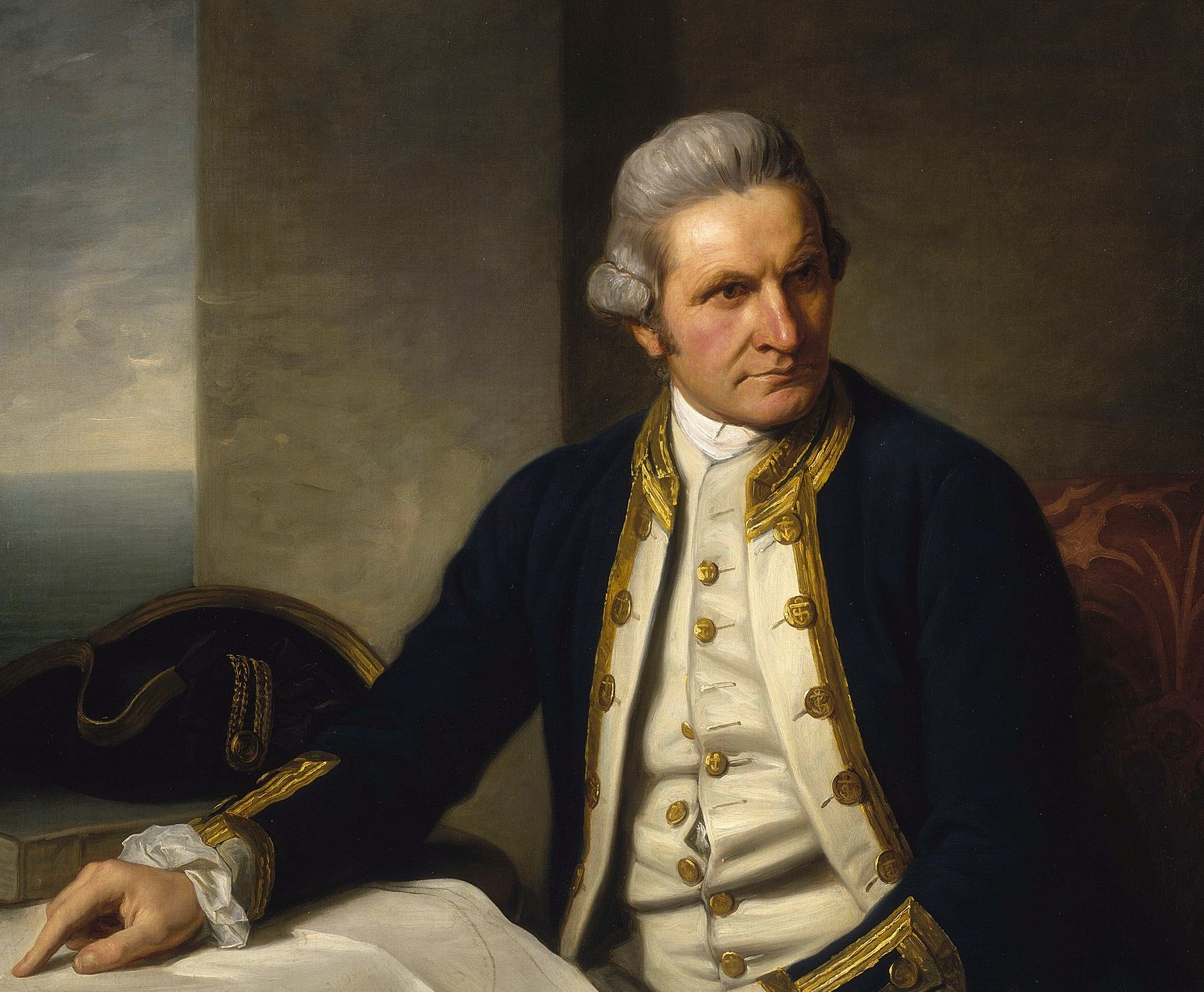 Nathaniel Dance-Holland, Wikimedia Commons
Nathaniel Dance-Holland, Wikimedia Commons
They Didn't Have Mechanical Power
Cook wrote, “We could hardly conceive how these islanders, wholly unacquainted with any mechanical power, could raise such stupendous figures". But this wasn't the only mystery surrounding the moai.
They Knocked Them Down
By the time Cook began wondering about the moai's history, the people living on Easter Island had already begun toppling these major works and no longer tended to their upkeep. And so questions began to predate the sculptures themselves.
They Sparked Endless Questions
When did people first come to the island and what drove them to make such massive sculptures? What's more? After they had crafted them, how did they move them and properly place them on platforms? And what was their reason for knocking them over?
The Very Beginning
To answer this first question, we must rewind even further—back to anywhere between 300 and 1200 CE, which is the estimated period for when the first Rapa Nui people arrived on Easter Island.
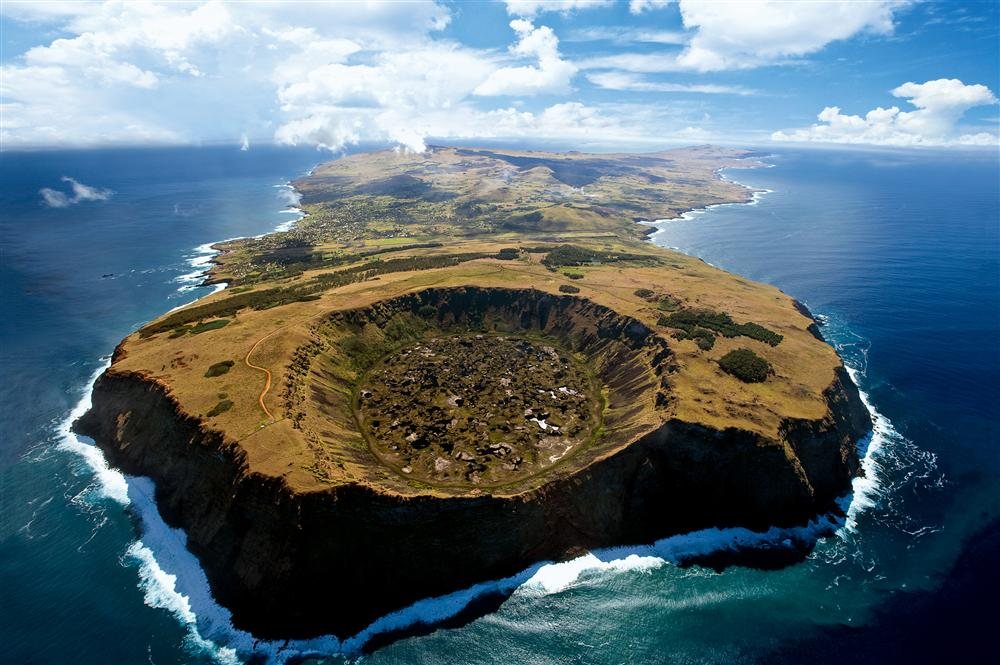 Pokihenua, CC BY-SA 4.0, Wikimedia Commons
Pokihenua, CC BY-SA 4.0, Wikimedia Commons
Made By Polynesians
Through techniques like radiocarbon dating and genetic analysis, modern researchers have been able to get a better grasp of the island's history. Therefore, it is believed that the Rapa Nui people have Polynesian origins.
How Were They Made?
Carving the enormous moai was no easy feat. To begin with, the carver would draw an outline of the sculpture on the rockface. Then the hard part would begin—with the sculptors arduously chipping away at the stone until the desired figure remained.
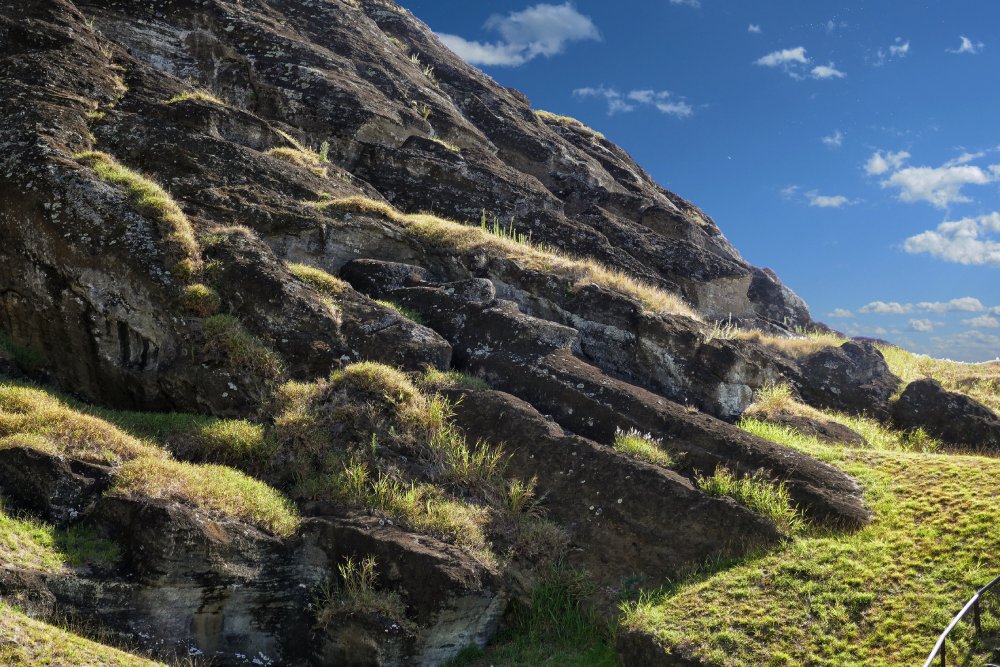 peterswelt.reisen, Adobe Stock
peterswelt.reisen, Adobe Stock
How Were They Made?
Though most of the moai are made with tuff, a small number of them are made with other materials, including trachyte, red scoria, and basalt. Once the builders had finished hewing the moai out of the rock, they used a pumice on the statue's exterior to smooth its surface.
But who exactly were the workers that made these statues?
Professional Carvers
According to oral tradition, those who crafted the moai were highly-regarded professional carvers, hailing from different clans. In fact, the clans had their own territories within the Rano Raraku quarry itself.
Their Features
Though the moai are far from identical to one another, they do have similar features, such as long noses and heavy brows. Their arms are smaller and carved close to the body. However, they don't have any legs.
Their Features
Then, of course, there are also many differences between the sculptures. Some are much shorter and squatter and some have defined eyes, while others wear hats—or topknots.
Their Features
The moais' very large head, taking up most of the sculpture—usually about three-fifths of the figure—is linked to the importance Polynesians placed on the chiefly head. But there are other theories about what the moai symbolize.
What Do They Mean?
Because of the wide range of moai, some have speculated that they are representations of the people's ancestors. They could have also been a way to express one's status, symbolizing living or past leaders.
It's been theorized that the larger your moai, the higher your place in the social hierarchy.
What Do They Mean?
Based on the statues' range of sizes, it's been suggested that there was a feeling of competition among the islanders—many of them striving to have the most magnificent statue.
What Do They Mean?
The moai weren’t just symbols to the islanders. According to archaeologists, “Carved stone and wooden objects in ancient Polynesian religions, when properly fashioned and ritually prepared, were believed to be charged by a magical spiritual essence called mana”.
What Do They Mean?
To the islanders who devoted so much of their time and artistry to the creation of these stunning statues, the moai contained a genuine spirit. As well, according to a 2019 study, there is a possibility that the creation of the moai also had another key purpose.
What Do They Mean?
This study suggested that the Rapa Nui People believed the moai would allow agricultural pursuits to prosper, improving the fertility of the soil and positively affecting their harvest. Even the way they positioned the moai on the island was important.
What Do They Mean?
There’s a reason why the majority of the moai face the land and not the ocean. It’s believed that these spiritual statues once looked in the direction of the villages, keeping a close, protective eye on the island’s inhabitants. However, seven statues break this particular rule.
Ahu Akivi
Ahu Akivi is one of the most sacred sites on Easter Island and home to seven very unique moai. These moai are identical to one another, and, instead of being placed by the coast, staring inward, they stand away from the coast, staring outward toward the Pacific Ocean. But that’s not the only reason they’re so special.
Ahu Akivi
The incredibly precise location of the moai at Ahu Akivi is undoubtedly strategic. During the Spring Equinox, they face the sunset, while during the Autumn Equinox, the sun rises on their backs. This mind-blowing attention to detail—aligning the statues with these astronomical events—is their most impressive feature.
Transportation Theories
The overarching mystery of the Easter Island Heads is the matter of their transportation. Carving them was one thing, but moving them was another beast entirely. Though historians still can't say for sure how the original islanders moved the moai, there are some general theories.
Transportation Theories
There are some clues that point to the possibility of the moai being transported in the upright position. This is because many of the statues can be found on their backs or stomachs, meaning they likely toppled during transportation. But that's not all.
Transportation Theories
Considering the sheer weight of these statues, keeping them upright would solve another major problem: The effort of erecting them from a horizontal position. However, even moving them to their final positions would have required some serious manpower.
Transportation Theories
It's more than likely that the Rapa Nui people used rollers, made of wooden logs, to push their massive statues toward their final resting places. However, this method would have also caused a major problem.
Transportation Theories
Larger moai would definitely require a shocking number of logs to move them from Point A to Point B. Islanders would have to cut down a disturbing number of trees for this purpose—so much so, that it would eventually lead to deforestation on the island.
This particular theory has also been put to the test.
Transportation Theories
The archaeologist Charles Love decided to experiment with rollers using a replica of moai. This statue weighed nine tons and needed the manpower of 25 people to transport it. However, in just two minutes, they managed to move the fake moai 40 meters.
However, there are a couple more theories.
Transportation Theories
Another theory doesn't involve rollers at all. Instead, some have suggested that the islanders rocked the moai back and forth (similar to shimmying a large piece of furniture across the floor) using ropes. Of course, there are many arguments to counter this theory.
Transportation Theories
There is an alarming lack of trees on the island, and the theory of the log rollers certainly answers this question. The rocking theory? Not so much.
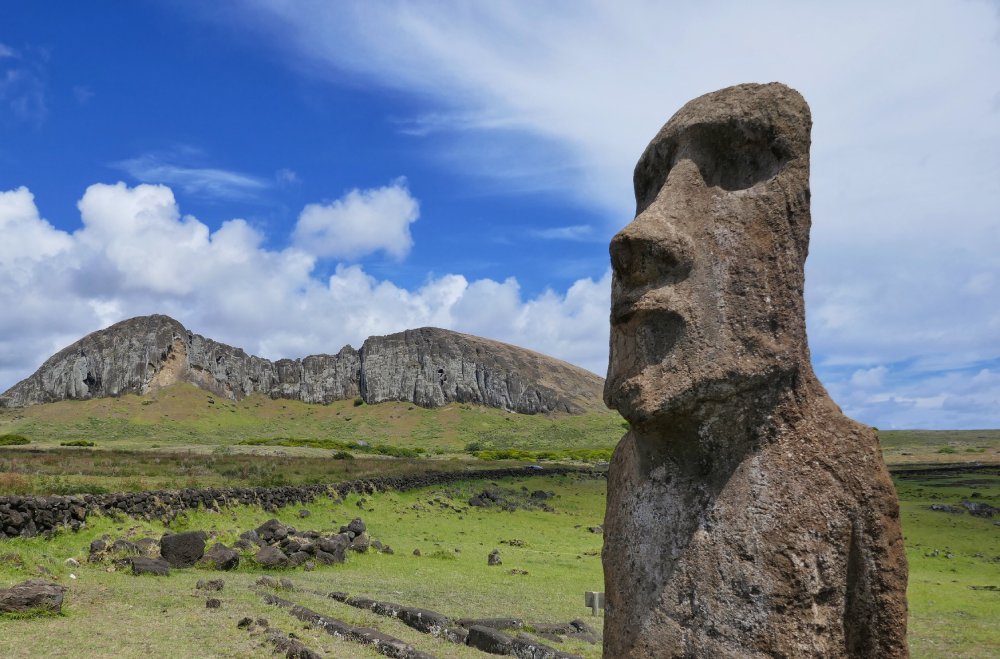 peterswelt.reisen, Adobe Stock
peterswelt.reisen, Adobe Stock
Transportation Theories
Additionally, the rocking technique would have put the moai at great risk as there was a higher chance of them falling during transportation. And perhaps the most obvious argument of all?
Transportation Theories
The rocking technique would have taken a painstaking amount of time. It wasn't at all efficient, and yet archaeologists have made multiple experiments to test it. In 2012, 30 people managed to move a moai replica, weighing five tons.
Made By Aliens?
Like any phenomena in history that modern thinkers can't quite fully explain, the Easter Island Heads have sparked countless supernatural theories. How else to explain the impossible, but to reference the impossible?
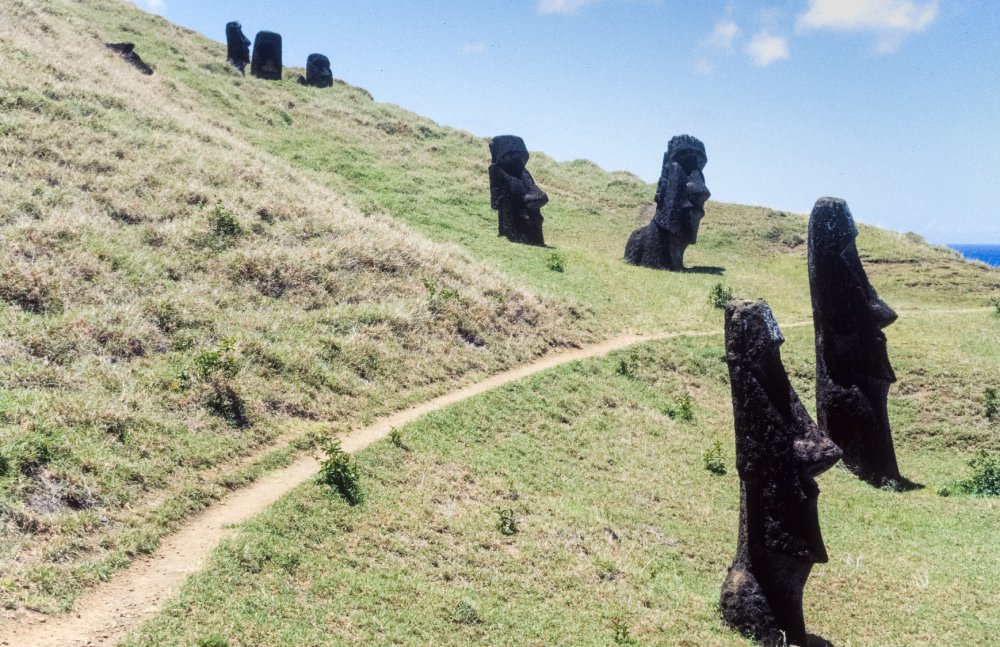 Dr. Jürgen Tenckhoff, Adobe Stock
Dr. Jürgen Tenckhoff, Adobe Stock
Made By Aliens?
Enter: extraterrestrials. Many people still believe that aliens, not humans, created the moai. However, the Rapa Nui's oral tradition already disproves this wild theory.
Made By Aliens?
Based on the cultural legends, it was definitely the Rapa Nui people—and not aliens—who made the moai. Even the island's geography seemed to back this up.
Made By Aliens?
You see, the home base for the moai was definitely the quarry Rano Rararuku. However, the further you move away from it, there is a noticeable difference in one particular feature of the moai—their size.
Made By Aliens?
The statues get increasingly smaller as you move away from the quarry. This is likely linked to the greater distance they had to travel. Similarly, they also change in size depending on their elevation.
The Abandoned Quarries
Though there was a time in the island's history, where its quarries were a bustling center of productivity, there came a point where workers suddenly abandoned them—even leaving their tools behind.
The Abandoned Quarries
In fact, the quarries seem frozen in time, with completed moai still waiting by the quarry—never brought to their intended resting places—as well as many of them still in progress. In the 1800s, this led to some wild theories.
The Abandoned Quarries
Quite incorrectly, some believed that Easter Island was just a small part of a sunken continent and wondered whether the majority of the statues were actually lost to the sea. Since then, however, scholars have shot these ideas down.
The Abandoned Quarries
Instead, they've come up with some rational, and far less fantastical, explanations for the abandoned quarries. The simplest reason might be that some carvers did not intend for the statues to be fully completed or moved to far-off places.
The Abandoned Quarries
Secondly, the carvers may have encountered issues with their materials—problems within the rockface itself that necessitated the abandonment of the project.
The Abandoned Quarries
Finally, the presence of unfinished statues makes sense because the island's statue-building culture eventually ended altogether. But why did the Rapa Nui people decide to stop making statues?
Why Did They Stop Making Moai?
When the island saw a period of severe deforestation, that's when its people halted the practice of making moai. In order to keep the soil moist, they had to funnel their time and effort into making rock gardens instead of carving statues.
Why Did They Stop Making Moai?
For quite a long time, these rock gardens utterly confused archaeologists, and it wasn't until the late 21st century that researchers realized these gardens had everything to do with agriculture. However, there is another theory as to why the production of moai ceased.
Why Did They Stop Making Moai?
Some suggest that it was the dominance of the Birdman cult that made people channel their spiritual beliefs into birds rather than the carved statues that represented their ancestors. This was likely because of the scarcity of wildlife on the island, and it even sparked battles between tribes.
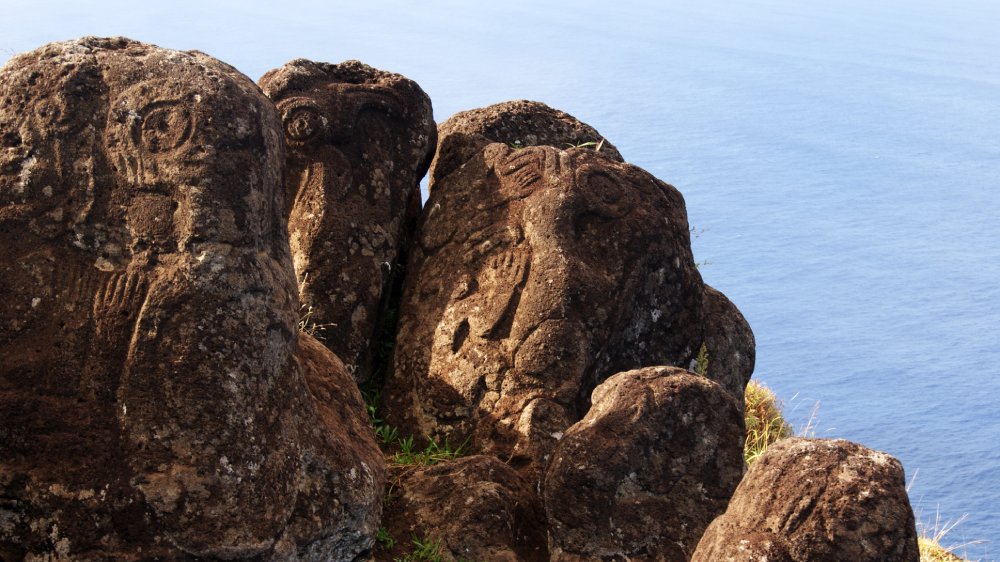 константин константи, Adobe Stock
константин константи, Adobe Stock
Why Did They Stop Making Moai?
Stunning evidence of the Birdman cult has been discovered all over the island. There are hundreds of birdman petroglyphs that have been skillfully hewed into basalt.
Preservation
The moai have been languishing on Easter Island for hundreds of years. Though around 50 of them have been restored to their original standing positions, they are not immune to the forces of nature.
Preservation
The passage of time combined with rough weather has definitely worn down the gorgeous statues. Water and seeds have found their way beneath the surface of the rockface, slowly but surely ruining the statues.
Preservation
The preservation of the moai remains a focus of the locals and archaeologists. However, some of the precious statues have been completely removed from the island entirely.
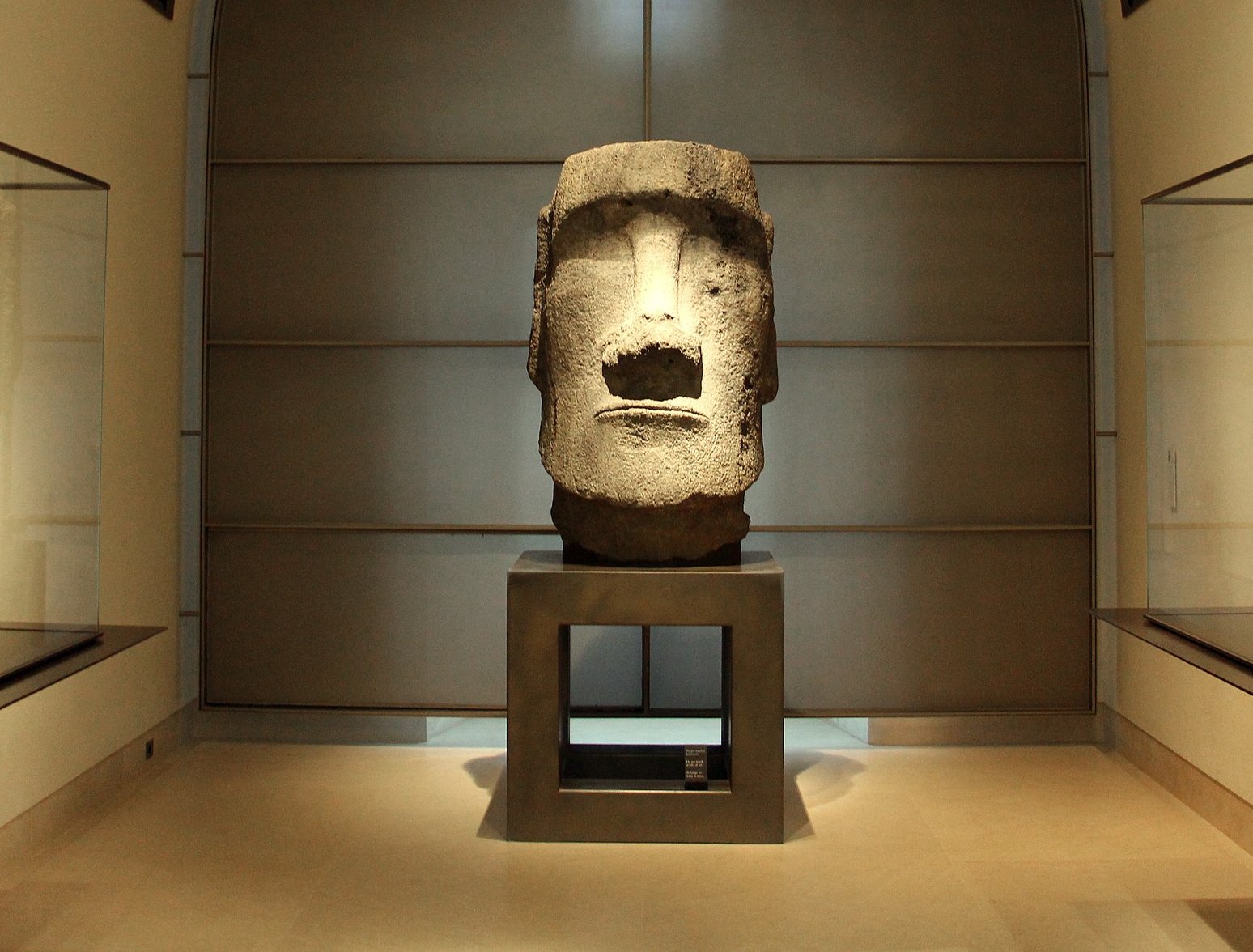 Musée du quai Branly, CC BY 3.0, Wikimedia Commons
Musée du quai Branly, CC BY 3.0, Wikimedia Commons
Preservation
12 moai now live in private collections and museums, such as the British Museum in London and the Louvre in Paris.
Preservation
And though the moai are still at the mercy of the elements, they are still highly revered. Any kind of vandalism by tourists is not tolerated. In 2008, one tourist learned this the hard way.
Preservation
This particular Finnish tourist decided to break off a part of an Easter Island statue's ear. The consequences? He not only had to cough up $17,000 in fines, but authorities banned him from visiting the island for three years.
However, there have been even bigger threats to the moai since then.
Preservation
In 2022, a volcano caused "irreparable" damage on the island, affecting over 247 square miles of land. The National Monuments Council was especially worried about the extreme temperatures the disaster caused.
Preservation
The heat caused by the volcano had the potential to create large and ruinous fractures within the moai. However, not all of the recent developments on the island have been so tragic.
New Discoveries
In 2023, the discovery of a smaller moai made headlines for an exciting reason. One of the island's lake beds had dried up, revealing the statue in all its glory. It marked the first time a moai had been discovered in such a location.
New Discoveries
According to Terry Hunt, a professor of archaeology, "They’ve been hidden by the tall reeds that grow in the lake bed, and prospecting with something that can detect what’s under the ground surface may tell us that there are in fact more moai in the lakebed sediments. When there’s one moai in the lake, there’s probably more".
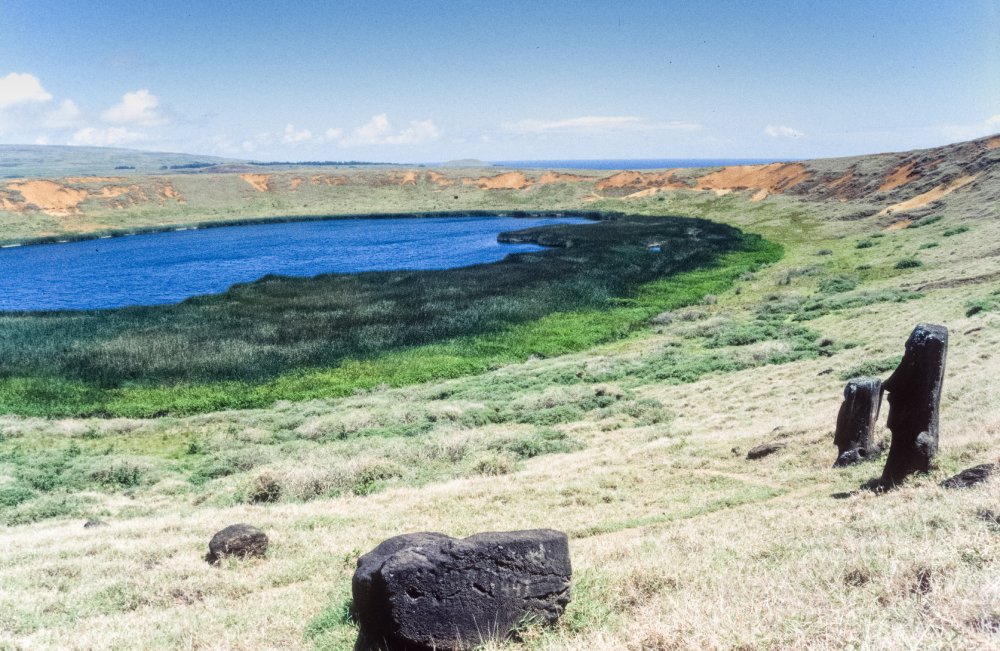 Dr. Jürgen Tenckhoff, Adobe Stock
Dr. Jürgen Tenckhoff, Adobe Stock
Forever Remembered
The moai continue to be one of the most profound historical sculptures in history. We might not have a complete understanding of how and why people construcÍted them in the first place, but it is precisely their air of mystery that continues to fascinate us today.
Heck, the moai even have their own emoji... I wonder what the original islanders would have thought of that.
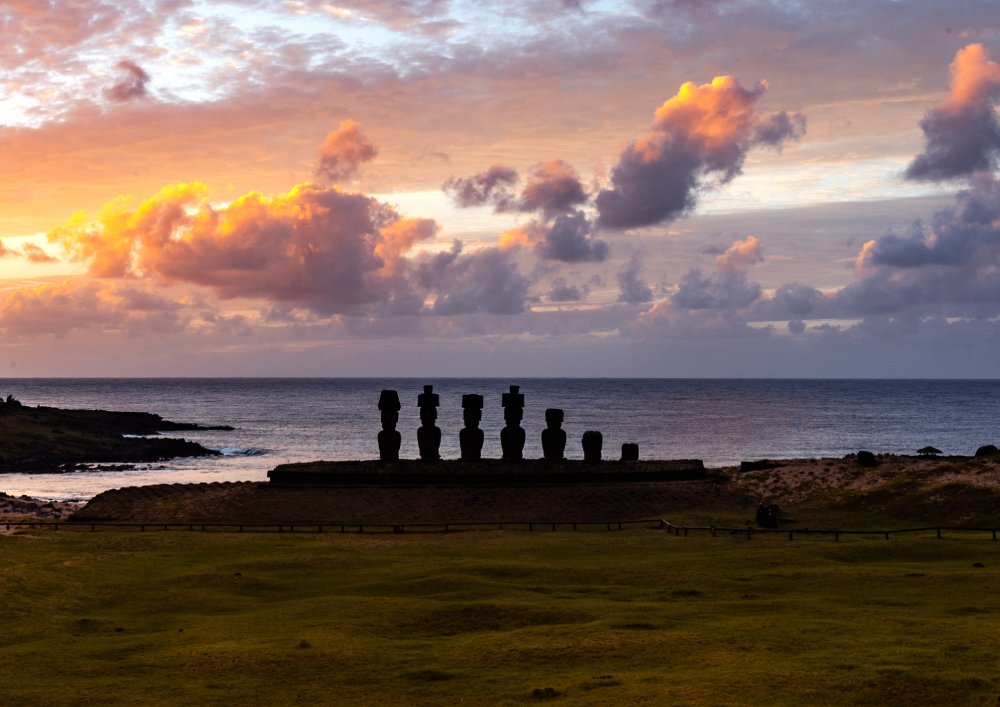 Andres Briones C., Adobe Stock
Andres Briones C., Adobe Stock

